Another Bouncing Ball: July 2010 Archives
Buzz Spector (second Spector image via)
On the morning of July 31, 2001, Canadian novelist Howard Engel awoke and discovered that he could not read the newspaper. His room looked normal, and he could still read his clock, but his books were all unintelligible....
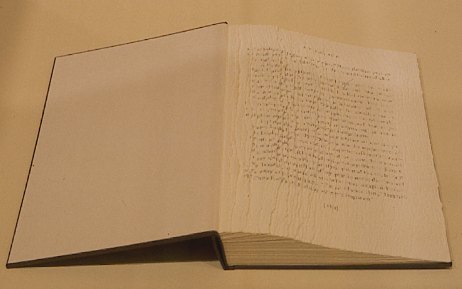
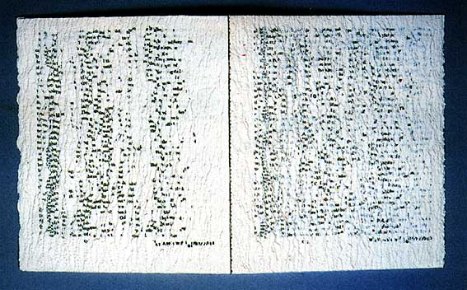 Rachel Khedoori
Rachel Khedoori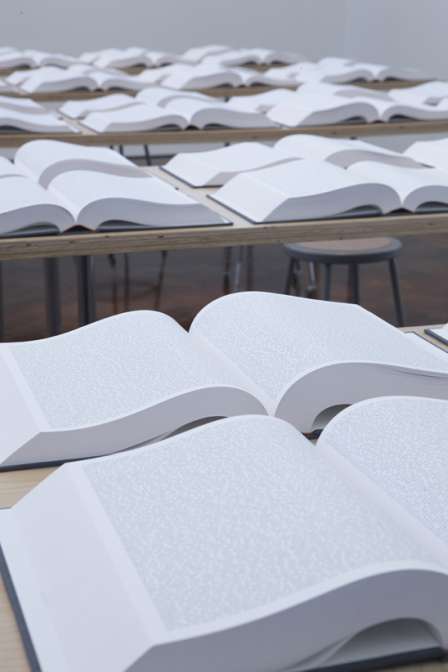
Leslie Wayne
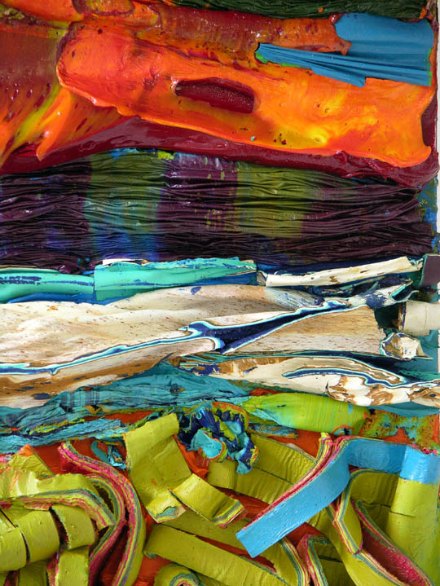 Ivanna Brenner (via)
Ivanna Brenner (via)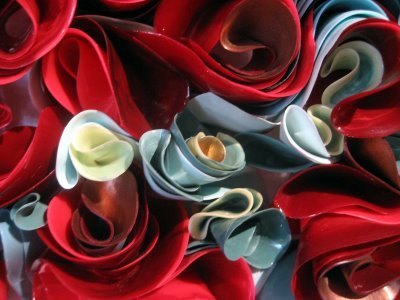 Peter Fox (via)
Peter Fox (via)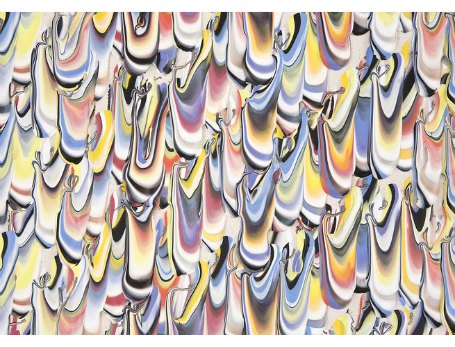 Margie Livingston
Margie Livingston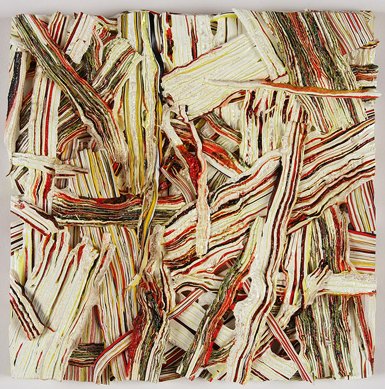 Peter Tollens Untitled
2005
oil on wood
3.75 x 3 inches
Peter Tollens Untitled
2005
oil on wood
3.75 x 3 inches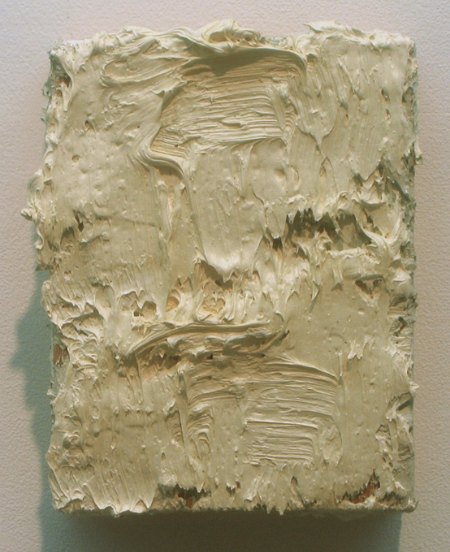 Michael Toenges
16-07-32-28
2007
oil on linen
15 x 13 inches
Michael Toenges
16-07-32-28
2007
oil on linen
15 x 13 inches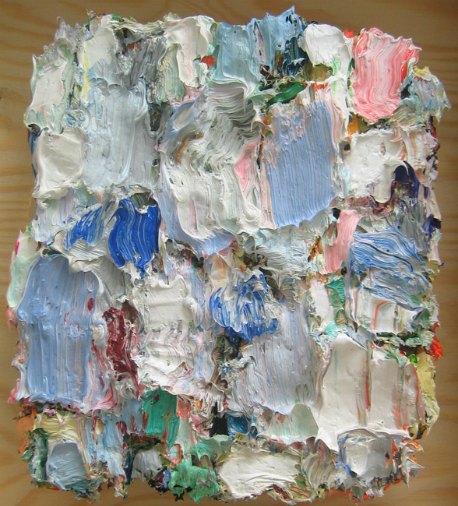 Andrew Dadson To Be Titled, 2010.
Oil on canvas
20 x 15 inches
(detail)
Andrew Dadson To Be Titled, 2010.
Oil on canvas
20 x 15 inches
(detail) Wil Jansen
Wil Jansen  Richard Allen Morris
Richard Allen Morris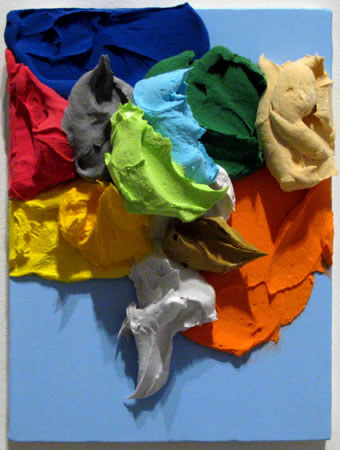 Tomory Dodge Survivalist, 2007. Oil on canvas.13 3/4 x 16 inches
Tomory Dodge Survivalist, 2007. Oil on canvas.13 3/4 x 16 inches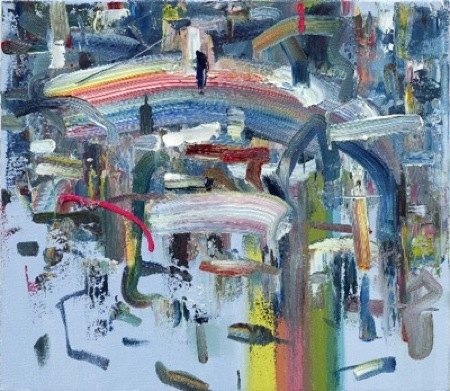 Drew Klassen
Drew Klassen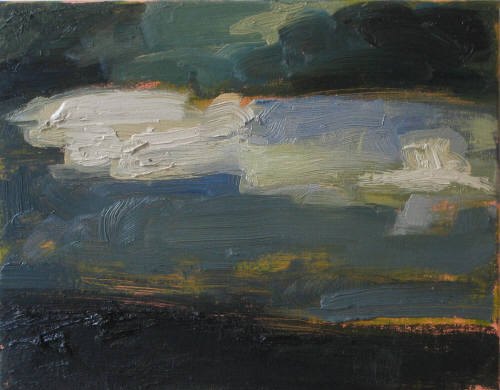 Joan Snyder Life of A Tree, 2007.
Oil, acrylic, cloth, berries, paper mache, glitter, nails, pastel, on linen
48" x 68"
Joan Snyder Life of A Tree, 2007.
Oil, acrylic, cloth, berries, paper mache, glitter, nails, pastel, on linen
48" x 68"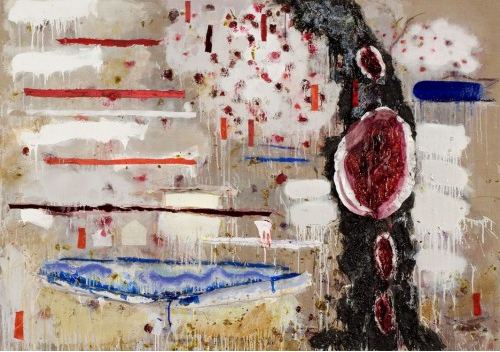 Alexander Kroll Untitled, 2009
Oil on linen over panel
14" x 14"
Alexander Kroll Untitled, 2009
Oil on linen over panel
14" x 14"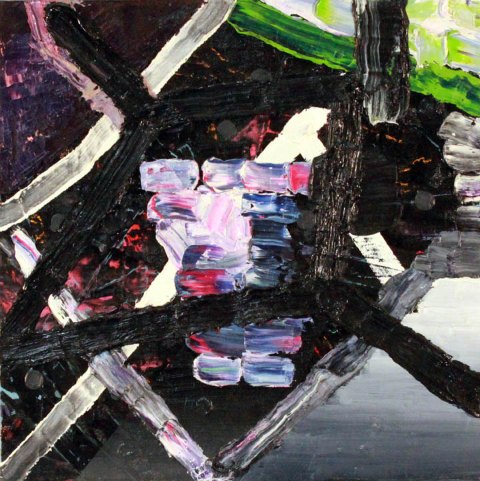 Back to flat. Paint doesn't need to be thick to be thick.
Back to flat. Paint doesn't need to be thick to be thick. Angela Fraleigh, in this moment, 2007, oil on panel, 72" x 96"
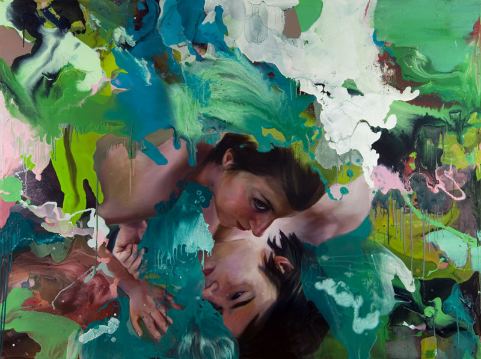
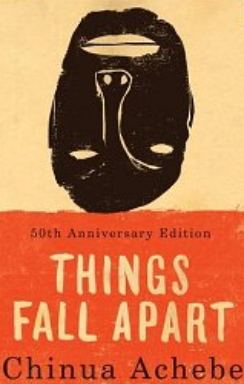 Slouching Towards Bethlehem is Joan Didion at her brilliant best. Dan Savage tips his hat to it in Skipping Towards Gomorrah.
Slouching Towards Bethlehem is Joan Didion at her brilliant best. Dan Savage tips his hat to it in Skipping Towards Gomorrah.When law professor Elyn R. Saks wrote about her illness - "paranoid schizophrenia with acute exacerbation; prognosis: grave" - she titled it, The Center Cannot Hold. Paul Krugman went to the same well this morning to explain the problem with Obama:
Mr. Obama's attempts to avoid confrontation have been counterproductive. His opponents remain filled with a passionate intensity, while his supporters, having received no respect, lack all conviction.
Everybody's quoting William Butler Yeats, and not from the range of his work but from a single short poem published in 1919, The Second Coming. Nearly a century later, it has become the key to the millennial divide.
Turning and turning in the widening gyre
The falcon cannot hear the falconer;
Things fall apart; the centre cannot hold;
Mere anarchy is loosed upon the world,
The blood-dimmed tide is loosed, and everywhere
The ceremony of innocence is drowned;
The best lack all conviction, while the worst
Are full of passionate intensity.
Surely some revelation is at hand;
Surely the Second Coming is at hand.
The Second Coming! Hardly are those words out
When a vast image out of Spiritus Mundi
Troubles my sight: a waste of desert sand;
A shape with lion body and the head of a man,
A gaze blank and pitiless as the sun,
Is moving its slow thighs, while all about it
Wind shadows of the indignant desert birds.
The darkness drops again but now I know
That twenty centuries of stony sleep
Were vexed to nightmare by a rocking cradle,
And what rough beast, its hour come round at last,
Slouches towards Bethlehem to be born?
Update: James Harris reminded me of Lawrence Lemaoana from the gallery's current show. (With admirable restraint, Harris did not add, How could you have forgotten this?)
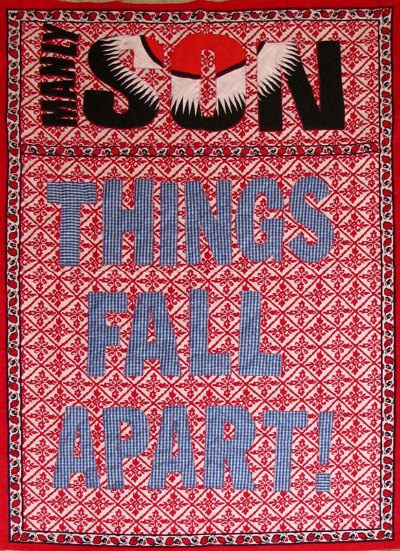
May the winner not be a douchebag.Jen. Shake your usually admirable head to clear it. We care about art, remember? Look down and check the color of your jersey. You're on the art critic team. Art critics don't care who's a douchebag, not that they would would presume to judge based on the edited clips of a reality TV show. (My last posts on the show here and here.) The question is, who's making the best art, as far as the audience can tell, given the format. It's Miles Mendenhall followed by Peregrine Honig and Nicole Nadeau. They're not necessarily the best artists, but they are the best reality TV artists this sorry season.
The former arrived at the gate packing a fatal flaw: Of the 14 candidates, at least 9 were unsuited to the format. Week after week, we've seen weak after weak. Last night Jerry Saltz woke up to the problem and started blaming the victims, hurling insults at the artists. This show does not represent contemporary art, artists or how people talk about art. And yet, yes, I'm watching it. (Tick, tick: the sound of me wasting my life.)
The latter, SYTYCD, opened with 10 terrific dancers and one struggling to keep up, Jose Ruiz. During the season, Ruiz accomplished the impossible. He transformed himself into a professional, not that the judges appear to have noticed. The real problem is the risk to the talent. Three are out with injuries. Of the six left standing, Billy Bell is nursing a knee injury, Ruiz pulled a groin muscle and Lauren Froderman was hospitalized last night with what early reports call dehydration. This year the show's on speed-up, with dancers being asked for more and more daring-do by choreographers. Will SYTYCD become known as dance's chain gang?
Appearing last night with Ade Obayomi in a Stacey Tookey piece about two childhood friends who bump into each other as adults, Bell was breathtaking. Watch him on the link.
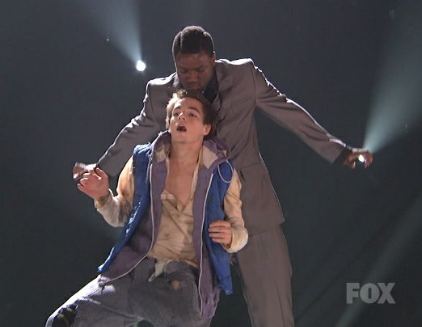 Work of Art does little for art, but SYTYCD has attracted a new generation of now passionate dance fans. Yes, it's ham-fisted, but still glorious to watch.
Work of Art does little for art, but SYTYCD has attracted a new generation of now passionate dance fans. Yes, it's ham-fisted, but still glorious to watch. "Fear not, fear not, thou Wedding-Guest!Heather and Ivan Morison, Frost King at Open Satellite
This body dropped not down.
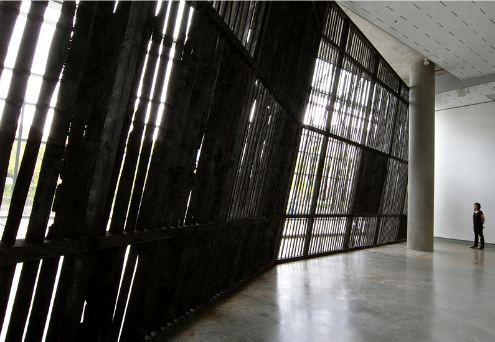 Some exhibits end early, even at major venues, earning from procrastinators lasting enmity. Rarer are the exhibits that trail behind their closure dates, still in place when they promised to be gone. They reward those who believe despite repeated evidence to the contrary that anytime they show up will be time enough.
Some exhibits end early, even at major venues, earning from procrastinators lasting enmity. Rarer are the exhibits that trail behind their closure dates, still in place when they promised to be gone. They reward those who believe despite repeated evidence to the contrary that anytime they show up will be time enough. Curated by Eric Fredericksen, Heather and Ivan Morison's Storm King was supposed to end July 17. It's still there, and there it will remain till after Aaron Flint Jamison's opening Aug. 11, 6-9 p.m. Yes, after. All the space Jamison needs is between his ears. He can deal with a burnt slab of ship casting its ribbed shadow across his enterprise.
(Lorna Green)
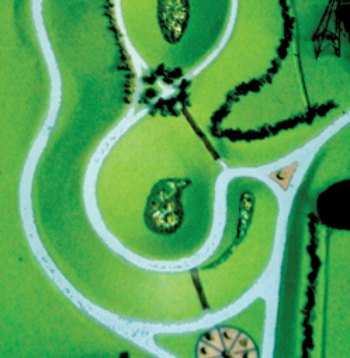 ...and miniature golf courses...
...and miniature golf courses...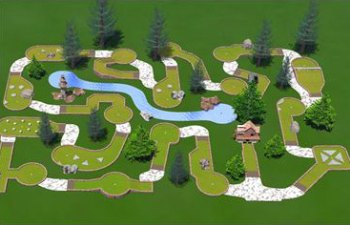 ...is the Links Invitational at the Kirkland Arts Center, curated by Cable Griffith. Twelve artists turned the galleries into 9 holes of playable golf, with courses running down the stairs, across a table top and through a passel of sturdy constructions.
...is the Links Invitational at the Kirkland Arts Center, curated by Cable Griffith. Twelve artists turned the galleries into 9 holes of playable golf, with courses running down the stairs, across a table top and through a passel of sturdy constructions. Putt through the stove top into the sink, rattle through the pipes to land on the ground. If you're going to get a hole in one, this is it. Ben Hirschkoff & Jason Wood, 7 Ways to Enjoy Washing the Dishes
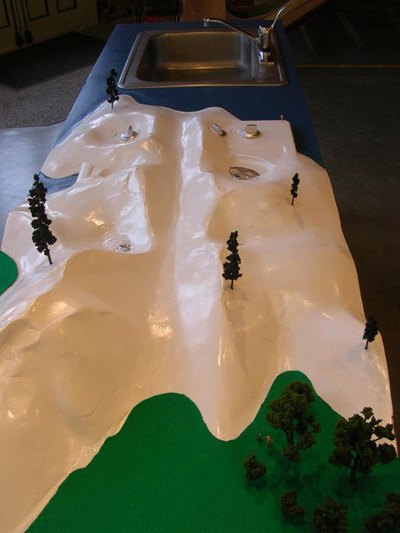 As Robert Morris liked to say, simplicity of shape does not equate to simplicity of experience. Jason Hirata, When I was in sixth grade, I designed a golf course for school
As Robert Morris liked to say, simplicity of shape does not equate to simplicity of experience. Jason Hirata, When I was in sixth grade, I designed a golf course for school Hirata, detail:
Hirata, detail: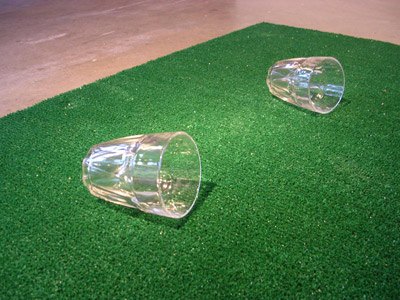 Drive low under cliches to rise through the hole: Kristen Ramirez, How Green Was My Valley
Drive low under cliches to rise through the hole: Kristen Ramirez, How Green Was My Valley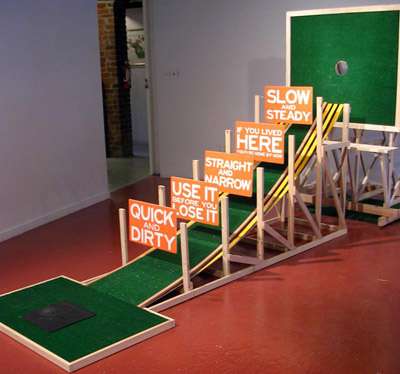 Tee off at the top of the stairs, bank left and free fall home: SuttonBeresCuller, Pigeonholed
Tee off at the top of the stairs, bank left and free fall home: SuttonBeresCuller, Pigeonholed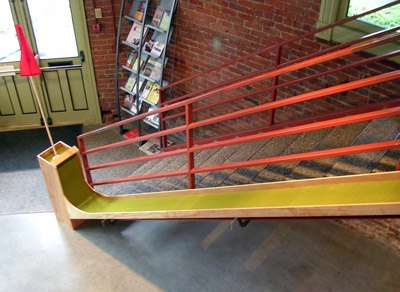 Through Thursday.
Through Thursday. I haven't read it in years and don't have a copy but remember it as conclusive. When Donald Kuspit claimed in a lecture in Seattle that artists create but need the intelligence of critics to animate that creation, he illustrated Wayne's point exactly. Critics are male stereotypes, opening the door for the little lady.
Not to pick on Kuspit, but he tends to wade into his own muck and root around as if he's dining with the queen. Take, for instance, his take on glass in his 1998 tome on Chihuly:
When it is soft, it can be identified as female, and when it is hard, as male.The opposite, he wrote, is also true:
At the same time, when it is hard it is static, a trait often traditionally considered female, and when it is soft it is dynamic, supposedly a male trait.Kuspit would be fun on Work of Art. When being fed nonsense, I prefer it to be elegant nonsense, like Kuspit's. With the exception of the only-fleetingly-there Jerry Saltz, Work of Art judges tend to vacant.
They seem to believe that if artists can't (or won't) explain their work, that work can't be valid. It's the reason Nao Bustamante was axed from the shock-art episode, even though her piece was the only one that came close to shocking AND even though guest artist Andres Serrano tried to save her. (Judges who don't listen to Serrano on this subject are beyond dim.)
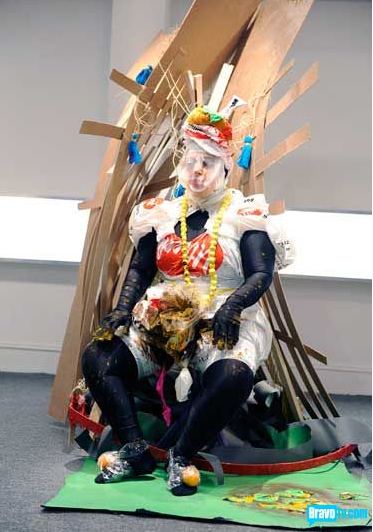 She sat amid her rubble like a demented street person, plucking at herself as judges discussed her. She lost the race because she could not keep so slow a pace. And because she refused to provide cue cards. As Dave Hickey put it:
She sat amid her rubble like a demented street person, plucking at herself as judges discussed her. She lost the race because she could not keep so slow a pace. And because she refused to provide cue cards. As Dave Hickey put it: I don't care about an artist's intentions. I care if the work looks like it might have some consequences.Bustamante had the best line on her reluctance to explain, from the first episode and now a t-shirt available via.
 The judges aren't the real problem with Work of Art. It's a combination of weak challenges and too many weak artists. Apparently weak artists. Hard to say when given the odd glimpse of their artificially-produced output through a TV screen. Of the artists remaining, Peregrine Honig, Miles Mendenhal and Nicole Nadeau have managed to master the eccentric format. The rest are just puzzling.
The judges aren't the real problem with Work of Art. It's a combination of weak challenges and too many weak artists. Apparently weak artists. Hard to say when given the odd glimpse of their artificially-produced output through a TV screen. Of the artists remaining, Peregrine Honig, Miles Mendenhal and Nicole Nadeau have managed to master the eccentric format. The rest are just puzzling. Back to Saltz for a second. His running commentary on the show is better than the show, although his foray into art-critic stand-up is worth watching on the screen. There's the time he told guest artist Will Cotton that he was a girly-man (Only girls draw unicorns in their youths.) Cotton brushed him off with dignity. And there's the time Saltz dipped into AA for art-crit lingo: "Keep it simple, stupid." Yes, he's flailing about, and his attempts to distance himself from the Work of Art herd don't always ring true.
Saltz:
No one in the art world calls themselves a "figurative" or "abstract" painter. They just say they're an artist or a painter. It was a sign that the producers didn't know the art-world lingo.No one uses the terms figurative or abstract? Saltz needs to tell his wife. She used the offending language in her recent obit on Doug Ohlson:
By the time Mr. Ohlson died on June 29 at 73, after a fall in front of his loft building on Bond Street in Manhattan, he had fulfilled his determination with considerable effectiveness, making abstract paintings that experimented intuitively with the color spectrum regardless of fashion.Great obit, but I'll bet the lead was ruined by some dead-literal editor. When I read it, I did not miss working at a newspaper. Remove the first five words, and the sentence is a winner.
It could be said that Doug Ohlson's determination to be a painter came out of the blue.Project Runway opens its eighth season on Thursday night. Its judges are far better than Work of Art's, and yet a tedium hangs over the enterprise. Its much-imitated format is now old hat. More importantly, uninspiring contestants in recent years haven't offered much of a reason to care about them.
That leaves So You Think You Can Dance. Of the judges, Adam Shankman is both likable and savvy. The others are frequently intolerable. Nigel Lythgoe is a self-aggrandizing ass. Mia Michaels has virtues as a choreographer, but as a judge, she's strictly from the feelings school, specializing in her own. Her praise curdles with emotional excess, and her criticisms are personal attacks.
As the show (slowly, grudgingly) gains legitimacy in the dance community, better choreographers are widening its reach, but what makes this show compelling is the dancers. Although it's painful to watch them be milked like production-line cows, every week they turn whatever they're given into gold.
About that production line: Three artists this season have been felled by injuries, including the brilliant Alex Wong, whose injury is serious enough to be career threatening. Each season dancers are asked to do more. Top cows at dairy farms are treated better. (On the link, Wong in a hip hop routine with tWitch. Below, with Allison Holker. Watch to the end and note that final step.)
.
Shaun Kardinal on Translinguistic Other:
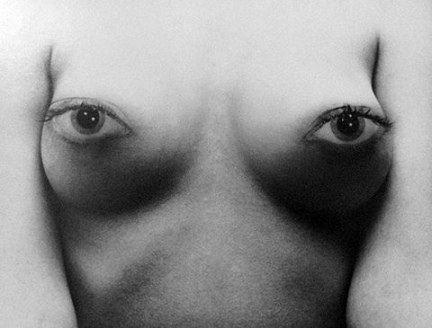 Andy Warhol, Ann Buchanan's Screen Test on Best Of:
Andy Warhol, Ann Buchanan's Screen Test on Best Of: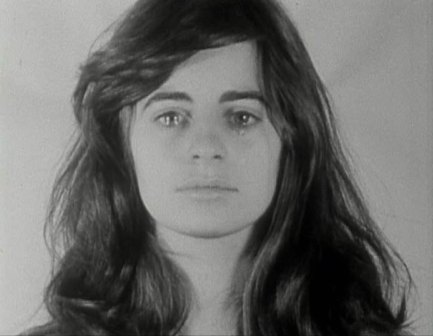 Joey Veltkamp on Best Of, deer, all the time, deer:
Joey Veltkamp on Best Of, deer, all the time, deer: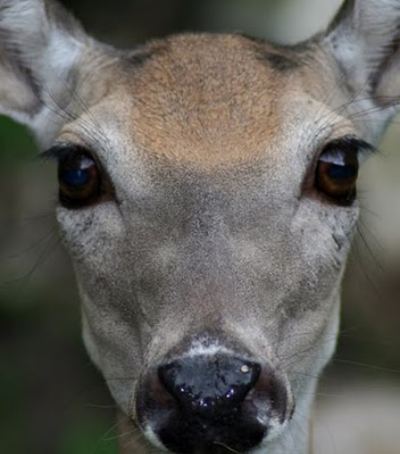 Except, of course, for Joey, there are also bears. (Eye of ownership, eyes of ecstasy.) Joey on Getting to Know You Better:
Except, of course, for Joey, there are also bears. (Eye of ownership, eyes of ecstasy.) Joey on Getting to Know You Better: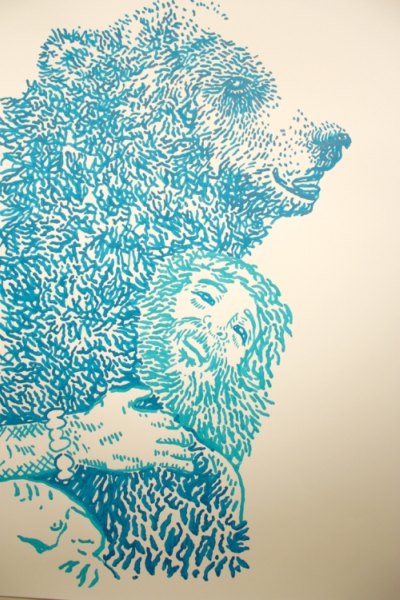 Staring over the burn: Ariana Page Russell on Getting To Know You Better:
Staring over the burn: Ariana Page Russell on Getting To Know You Better: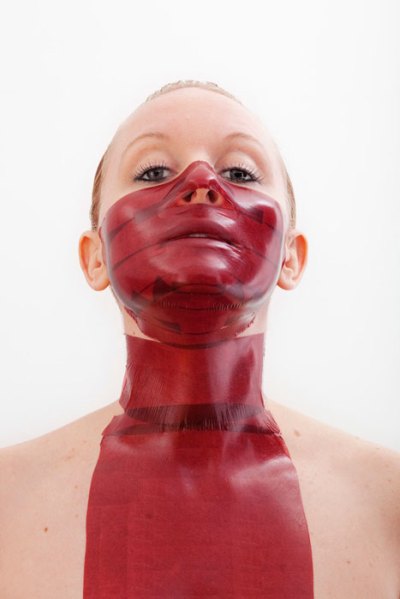 Staring at nothing: Diane Arbus on Jouissance:
Staring at nothing: Diane Arbus on Jouissance: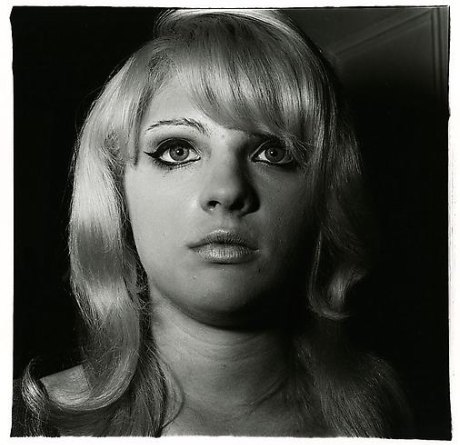
Richard Gilkey A 1955 weather report: muck with the certainty of flowers.
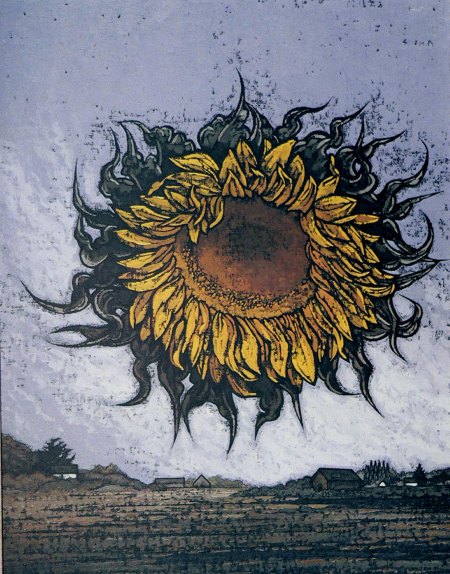 Guy Anderson, not dated. (Yes, the earth moved.) It's depressing how few good Andersons are online.
Guy Anderson, not dated. (Yes, the earth moved.) It's depressing how few good Andersons are online. 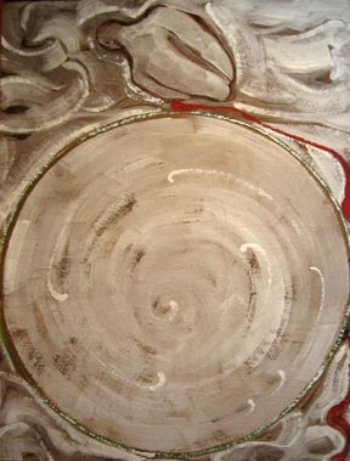 Also Anderson:
Also Anderson: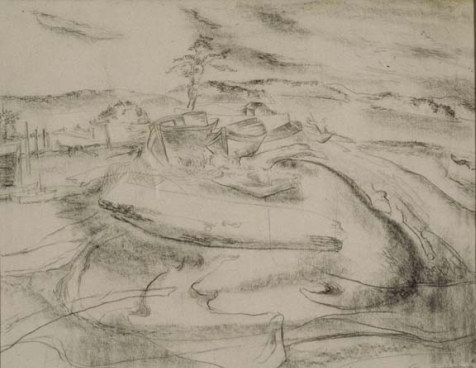 Norman Lundin He can imply rain without painting it.
Norman Lundin He can imply rain without painting it.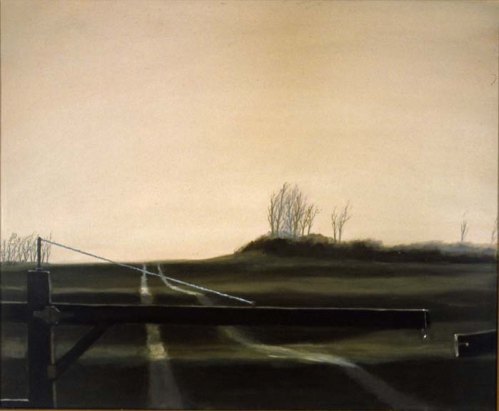 Kathryn Altus The Asian influence. Water becomes another shade of sky.
Kathryn Altus The Asian influence. Water becomes another shade of sky. 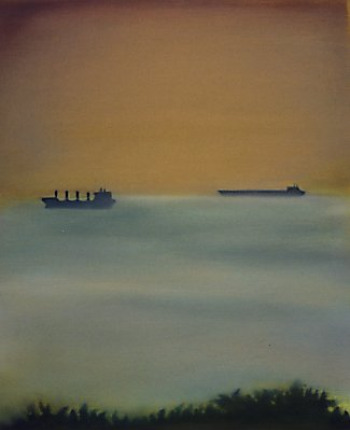 Clayton James The jeweled earth.
Clayton James The jeweled earth. Jay Steensma Alone, even when he's with someone else. His idea of shelter is like a dirty lung, struggling to expand and contract.
Jay Steensma Alone, even when he's with someone else. His idea of shelter is like a dirty lung, struggling to expand and contract.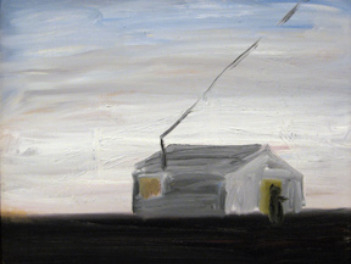 Alice Wheeler The air leaks blue.
Alice Wheeler The air leaks blue. 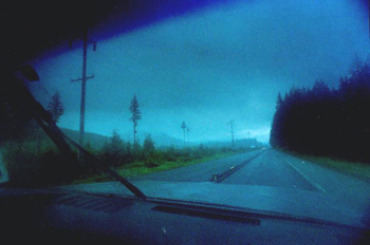 Ray Hill Father figure to Alden Mason. Peel back on Hill's serenity and you have Mason's jitterbug forms.
Ray Hill Father figure to Alden Mason. Peel back on Hill's serenity and you have Mason's jitterbug forms.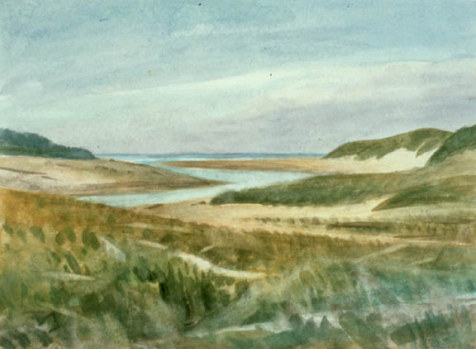 Alden Mason Life in a junkyard invaded by farms.
Alden Mason Life in a junkyard invaded by farms.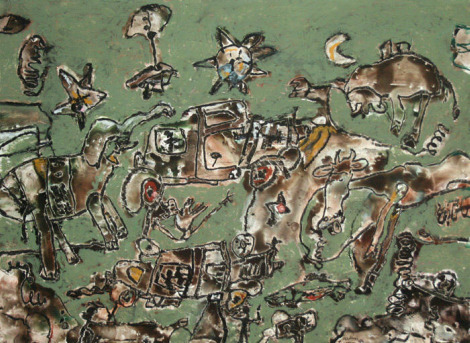 Thomas Wood Tulips become clouds.
Thomas Wood Tulips become clouds.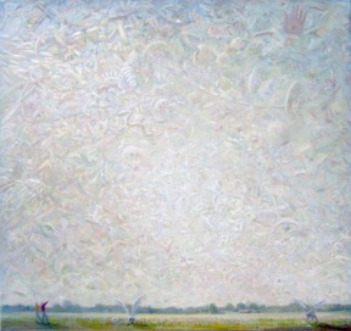
Paul Havas Like the barrier across the road in Lundin's Skagit roadway, Havas' thicket gives the viewer work to do.
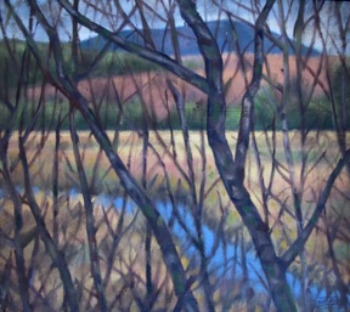
As a fellow-traveler from that time observed in the catalog for Fishtown and the Skagit River, an exhibit at the Museum of Northwest Art, through Oct. 3:
I never lived in Fishtown. I couldn't afford the rent.Fishtown disappeared as property values rose, bulldozed out of existence in 1980 and leaving a number of curatorial choices for its examination. Curator Kathleen Moles chose inclusion. Anybody with mud on his (or more rarely her) cracked boots who lived lean and wet on that river has a place in the show, if anything he made happens to survive, even on a postcard.
Yeah, I know, the place was well beyond the reach of landlords and realtors, but let's face it, the wages of Zen are not inconsiderable: all that chopping wood and hauling water.
Right choice, because Fishtown was not about hierarchy. Instead of sanitized, the Fishtown story unfolds at the museum as if emerging from a long hangover. A faint air of river rot pervades galleries stacked with paintings, photos, drawings and poems, nearly all celebrating Eastern philosophies and sharing a fetish for bad framing.
Photo, David King
 Charles Krafft stands out in spite of himself. While he was trying to free his mind from the wreckage of his body, he made art that stumbled along paths cleared by others, from Morris Graves and Guy Anderson to Li Po and Gary Snyder. Huffing volatile solvents and drinking incapacitating amounts of alcohol are not paths to greatness. Krafft hit his stride only after he sobered up and moved away. Fishtown is for him the scene of the crime, but it's also part of his personal roots music. He continues to play it on the keener, deeper instrument he allowed himself to become.
Charles Krafft stands out in spite of himself. While he was trying to free his mind from the wreckage of his body, he made art that stumbled along paths cleared by others, from Morris Graves and Guy Anderson to Li Po and Gary Snyder. Huffing volatile solvents and drinking incapacitating amounts of alcohol are not paths to greatness. Krafft hit his stride only after he sobered up and moved away. Fishtown is for him the scene of the crime, but it's also part of his personal roots music. He continues to play it on the keener, deeper instrument he allowed himself to become.Beyond Krafft, there are the liquid-light paintings of William Slater, the clarity of (visitor) Mary Randlett's photos, Hans Nelsen's woodwork, Paul Hansen's watercolors and Tom Robbins' Buddha-joke drawings.
Beyond them and more than equal to any are the poems of Robert Sund, rendered in calligraphy, typewriter and pen. He is the heart of Fishtown, the soul of old La Conner and a giant in the Northwest's poetic tradition.
My favorite Sund isn't the show but should be. It's printed on a leaflet whose facing page shows a photo of the artist as a boy, arm around his infant brother.
ANSWERING, FOR MY BROTHER (1974)
What do I do?...
I show you barns in the air over Porter Creek,
tulips that drop from the trees in Venezuela
and fall to the ground bursting into roosters.
They whip the dust out of the small valleys
under their wings.
Under the arches of their clawed feet,
mountains blossom,
distant but clear.
At the edge of ploughed fields
the surrounding sunflowers
march weary-hearted,
heading into the cities of the sun.
Impossible not to follow them
and go
with strange-shaped footsteps
that may slowly turn bitter as green seeds.
Thin floating webs glide on the upper winds,
flash once or twice a dry silver fire,
then return to their invisible journey.
It is easy to see
that among the insect world
many pilgrims have fallen to their knees.
More on Fishtown here, here, here and here. More on Robert Sund. More on Charles Krafft, who is featured through Saturday in a solo exhibit at Lucia Douglas Gallery in Bellingham and a Fishtown update show at Smith &Vallee in Edison through Sunday.
When photographs fade, paintings crack and sculptures crumble, the living give up on them. Exceptions are artworks stored in museums. There they'll remain till they go out of fashion and can be later lost (deaccessioned) in a larger forgetting.
Enter art historians. Although the Northwest has had few, one of the best is currently alive: David Martin of the Martin-Zambito Gallery, specializing in American art from the 19th century to the 1940s, with a focus on the Northwest.
Whatcom Museum senior curator Barbara Matilsky wisely consulted him for her Show of Hands: Northwest Women Artists 1880-2010, which is why the exhibit's early years are so compelling.
Compelling but disjointed. There is no way to create a narrative that spans 130 years of Northwest art. The picked-over past remains remote, and the present top heavy. If this exhibit were an essay, its lack of transitions would cause it to crumble.
Part of my reaction can be attributed to my mistake on the entry path. Instead of turning left along the corridor along a series of Margie Livingston's whorls of paint and Victoria Haven's wall painting, I turned right from Livingston and Haven and dumped myself into the exhibit's endpoint, in the past.
Livingston, Lacey Yellow Loops, 2009 Acrylic 12 x 15.25 inches
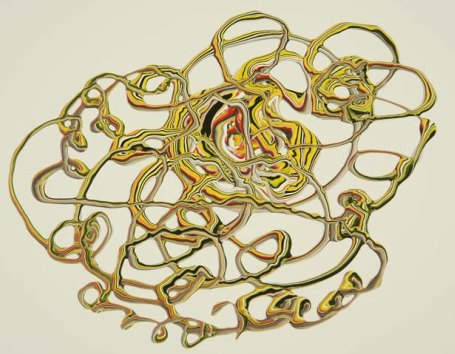 Victoria Haven, Site-specific wall painting for the Whatcom Museum, 2010
(Unlike many artists devoted to geometries, Haven never slips into formula.)
Victoria Haven, Site-specific wall painting for the Whatcom Museum, 2010
(Unlike many artists devoted to geometries, Haven never slips into formula.)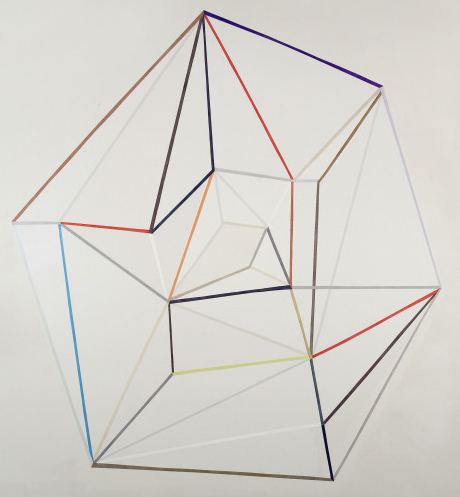 The clean lines and rigorously pale tonalities of Louise Crow's Eagle Dance at San Ildefonso, 1919, softened the fall. This painting was a tiny step from a dumpster till rescued at the very last minute.
The clean lines and rigorously pale tonalities of Louise Crow's Eagle Dance at San Ildefonso, 1919, softened the fall. This painting was a tiny step from a dumpster till rescued at the very last minute. 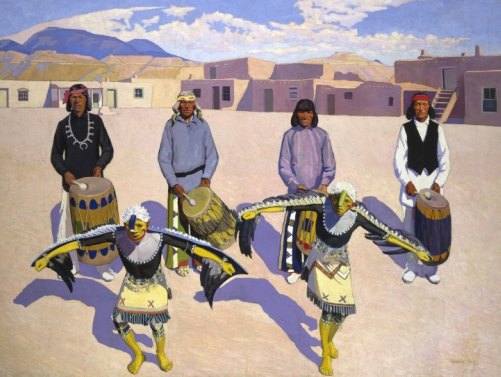 Seattle has the Northwest School, reduced in many minds to Mark Tobey, Morris Graves, Guy Anderson and Kenneth Callahan. Vancouver has Emily Carr. The world keeps Tobey and Graves alive, while the Northwest continues to support the remaining three.
Seattle has the Northwest School, reduced in many minds to Mark Tobey, Morris Graves, Guy Anderson and Kenneth Callahan. Vancouver has Emily Carr. The world keeps Tobey and Graves alive, while the Northwest continues to support the remaining three.Emily M. Carr (1871-1945) Untitled, c. 1920 Oil on composition board 12 15/16 x 16 in. (board) Henry Art Gallery, gift of Mrs. Viola Patterson
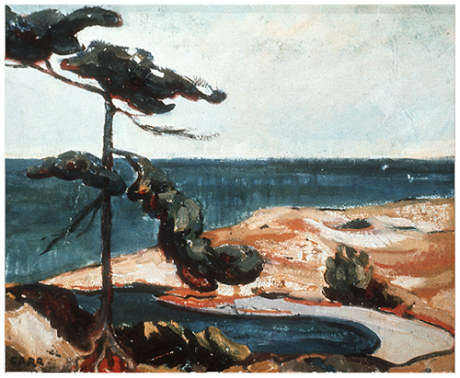 Helen Loggie was a briliant printmaker, attracted to nothing but trees.
Helen Loggie was a briliant printmaker, attracted to nothing but trees.Loggie, King Goblin, 1939
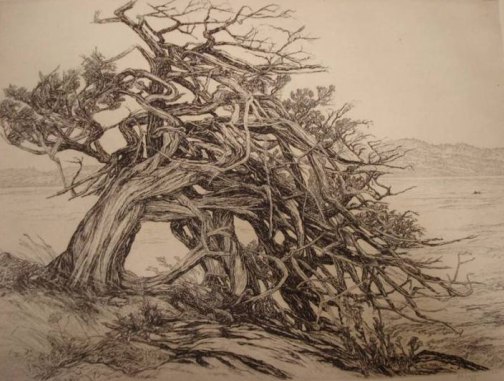 The 1940s through the 1980s look pretty good, with Helmi, Maude Kerns, Margaret Tomkins, Sally Haley, Patti Warashina, Mary Henry, Doris Chase, Karin Helmich, Gwen Knight, Norie Sato, Fay Jones and Elizabeth Sandvig.
The 1940s through the 1980s look pretty good, with Helmi, Maude Kerns, Margaret Tomkins, Sally Haley, Patti Warashina, Mary Henry, Doris Chase, Karin Helmich, Gwen Knight, Norie Sato, Fay Jones and Elizabeth Sandvig.Sandvig, Broken Columns, early 1970s
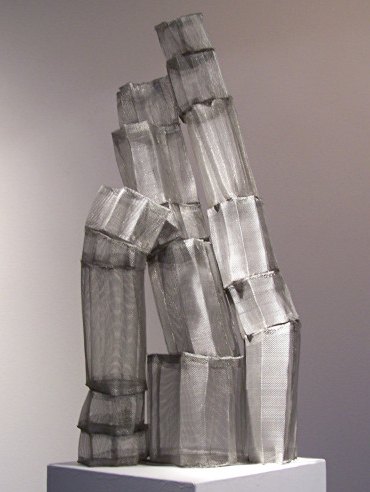 Working off Kandinsky, Leo Kenny is much better than Maude Kerns. While he trusted his forms, she cluttered up her background, but, hey, this show is girls-only. (In a Northwest art exhibit spanning 130 years that wants to rescue some of the forgotten, picking only women makes as much sense as picking only the left-handed. Everybody's forgotten.)
Working off Kandinsky, Leo Kenny is much better than Maude Kerns. While he trusted his forms, she cluttered up her background, but, hey, this show is girls-only. (In a Northwest art exhibit spanning 130 years that wants to rescue some of the forgotten, picking only women makes as much sense as picking only the left-handed. Everybody's forgotten.)Which brings us to the unruly present. Operating under the bloom-where-you're-planted rule, Matilsky probably felt she had to include local fave Susan Bennerstrom, but, like Seattle's Kathleen Gemberling Adkison, Bennerstrom is a dead spot where the ball won't bounce. There are better choices close to the WA/B.C. divide, such as Jasmine Valandani.
Sheila Klein, however, is a fine choice. Stand, 2000
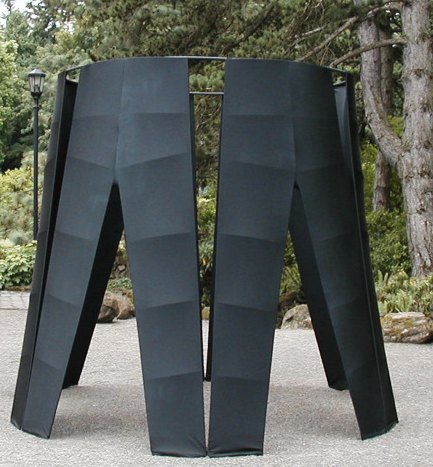 South of Seattle, so is Gail Tremblay. An Iroquois Dreams That the Tribes of the Middle East Will Take the Message of Deganawida to Heart and Make Peace, 2009
South of Seattle, so is Gail Tremblay. An Iroquois Dreams That the Tribes of the Middle East Will Take the Message of Deganawida to Heart and Make Peace, 2009
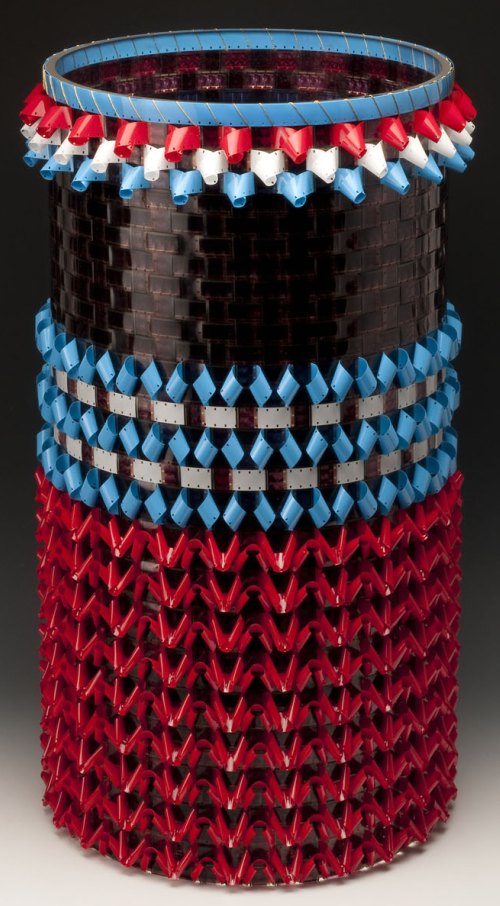 Even so, Seattle dominates the present, which didn't have to happen. No exhibit is fair. We seek them out not for justice but for impact. On that latter score, this one suceeds.
Even so, Seattle dominates the present, which didn't have to happen. No exhibit is fair. We seek them out not for justice but for impact. On that latter score, this one suceeds.Take it away, Seattle.
Claire Cowie, Rhinoscape, 2006
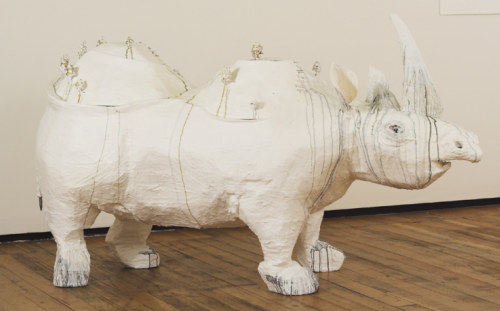 Alison Keogh, Newsprint series #4, 2007
Alison Keogh, Newsprint series #4, 2007
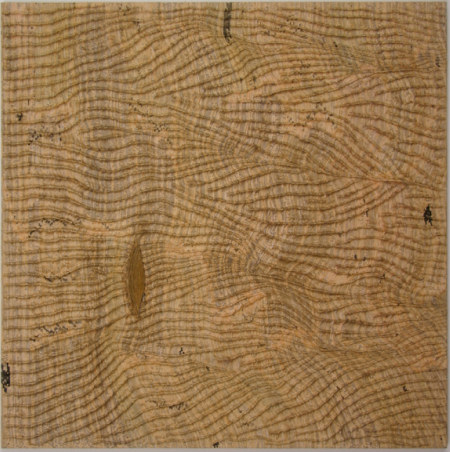 Sherry Markovitz, Mourning You/Morning Ewe, 2007
Sherry Markovitz, Mourning You/Morning Ewe, 2007
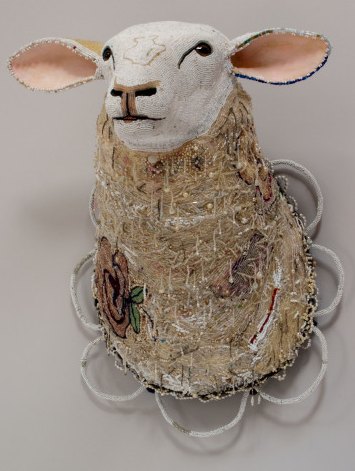 Susan Robb
Gentlest Gesture, 2008
Crystal, Sakura branch, muscle wire, circuit board, Mylar, powder-coated steel shelf
8 x 24 x 17 in.
Susan Robb
Gentlest Gesture, 2008
Crystal, Sakura branch, muscle wire, circuit board, Mylar, powder-coated steel shelf
8 x 24 x 17 in.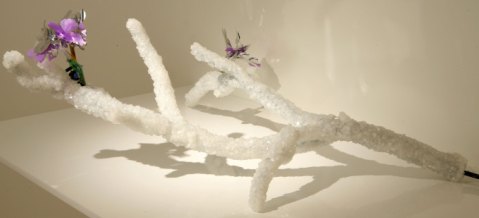 Through Aug. 8.
Through Aug. 8.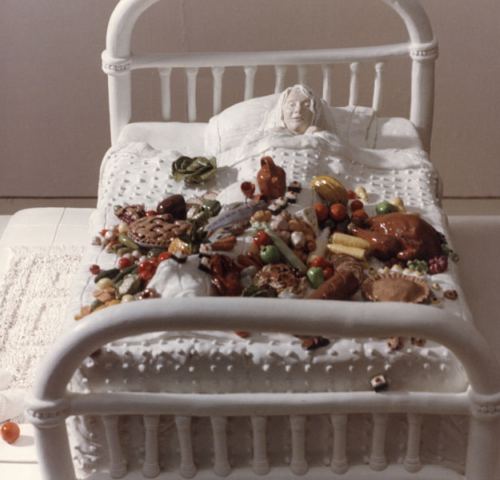 2. Don't bring your head to the table. (Or your hands.) Bad Manners, detail.
2. Don't bring your head to the table. (Or your hands.) Bad Manners, detail.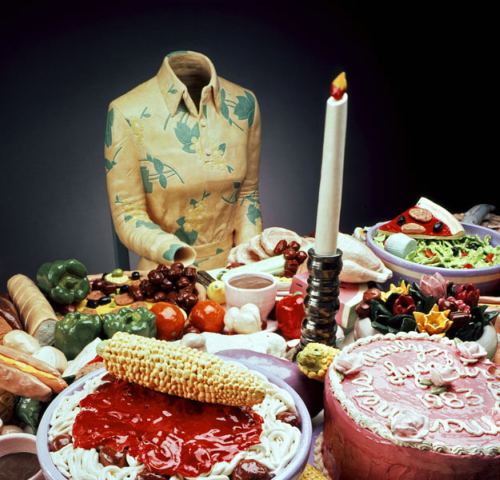
And yet, in shrinking his role, Mafford has managed to enlarge the remote purity of a remote world. Paul Krassner once described a way to tell the difference between news and dreaming. If you think what you're reading is unlikely, flap your arms. If you fly, you're dreaming. Mafford's prints fly.
Currently, he's offering for sale 47 prints for $47 each, size variable. Details at the Spike Shop.
Examples:
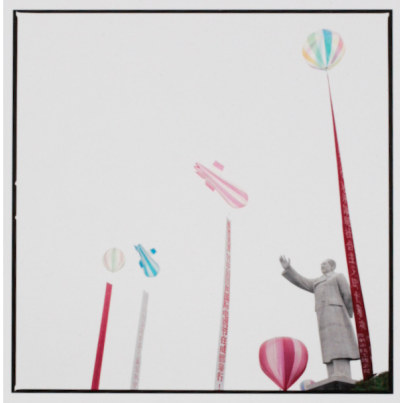
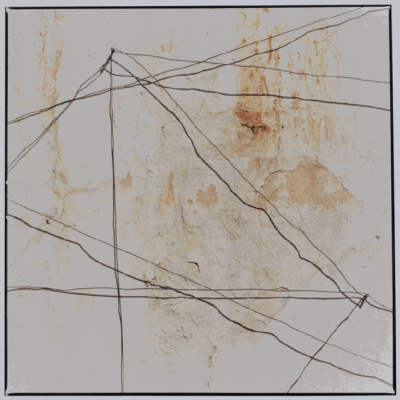
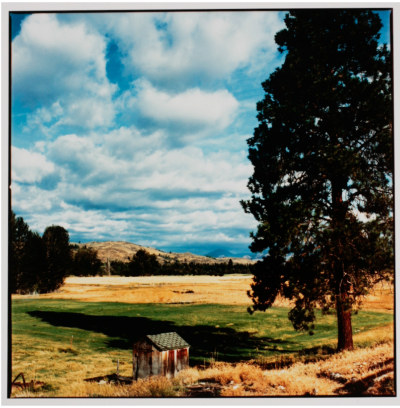
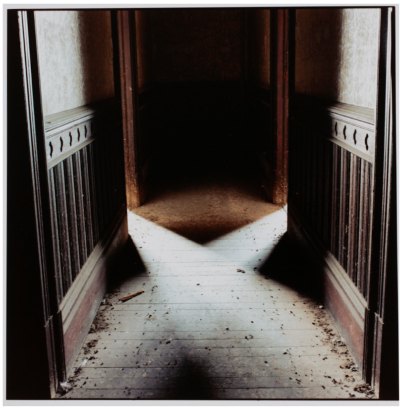
Drew Daly, COMPRESSION, 2006 One bureau, adhesive, lacquer 34 x 36 x 20.5 inches Photo credit: Eric Eley
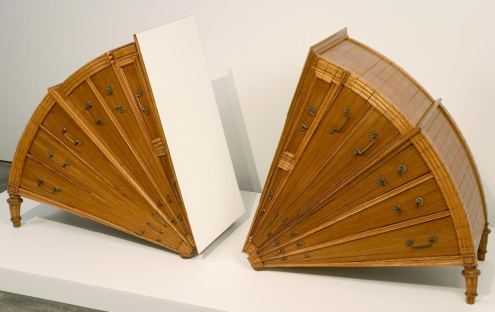 Peter Millett LEVERAGE, 2010
Welded steel
70 x 120 x 24 inches
Peter Millett LEVERAGE, 2010
Welded steel
70 x 120 x 24 inches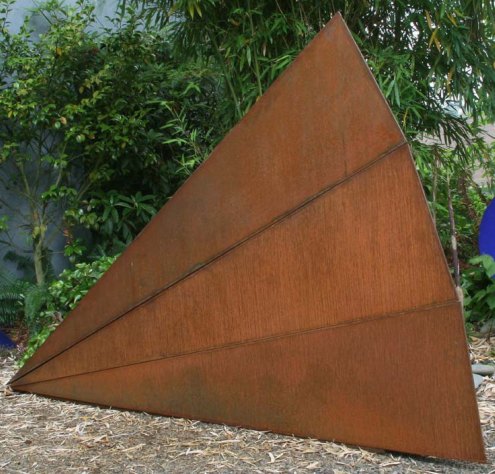
John Kirchner My Sad Daily Life as Measured in the Daily Paper, Newspaper, rain coat and steel 1994-2005
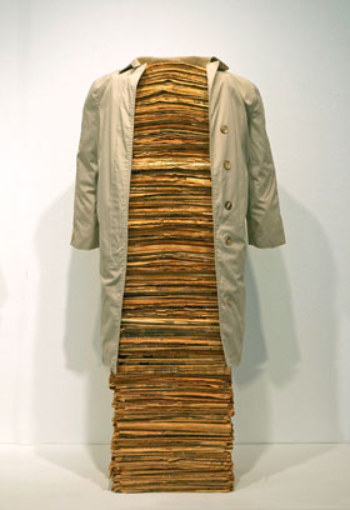
Derrick Jefferies Anatomy (Muscle) Polyethylene and tube lamps 2010 Backlight inkjet print & lightbox
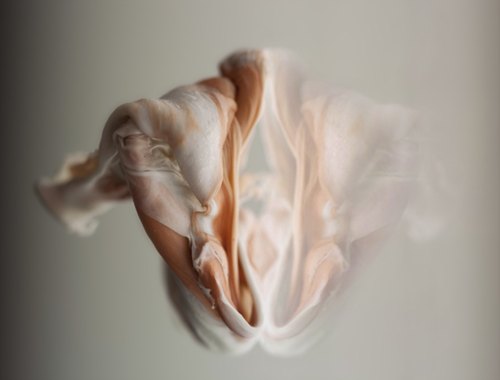
Inside a drugged stupor, grace can deliver a hallucinated clarity. It's only the world in Isaac Layman's large prints, common as dirt, but his delivery has the force of revelation. Were you Saul, these photos would knock you off your horse.
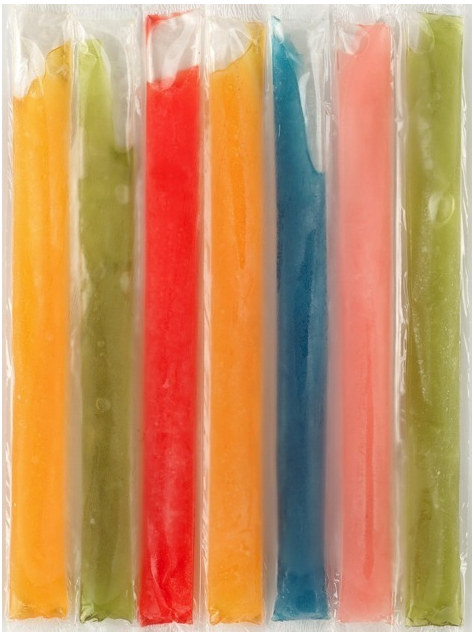 Because everything he shoots is too real to be real, the exhibit's title is, 110 Percent.
Because everything he shoots is too real to be real, the exhibit's title is, 110 Percent.From Flannery O'Conner's A Good Man Is Hard To Find:
His voice seemed about to crack and the grandmother's head cleared for an instant. She saw the man's face twisted close to her own as if he were going to cry and she murmured, "Why you're one of my babies. You're one of my own children !" She reached out and touched him on the shoulder. The Misfit sprang back as if a snake had bitten him and shot her three times through the chest. Then he put his gun down on the ground and took off his glasses and began to clean them.The moment that the grandmother is a good woman is the moment when the drug settles into the bloodstream and clears the mind, the moment when God speaks in the wilderness: the moment of transfixed understanding.
Hiram and Bobby Lee returned from the woods and stood over the ditch, looking down at the grandmother who half sat and half lay in a puddle of blood with her legs crossed under her like a child's and her face smiling up at the cloudless sky.
Without his glasses, The Misfit's eyes were red-rimmed and pale and defenseless-looking. "Take her off and thow her where you thown the others," he said, picking up the cat that was rubbing itself against his leg.
"She was a talker, wasn't she?" Bobby Lee said, sliding down the ditch with a yodel.
"She would of been a good woman," The Misfit said, "if it had been somebody there to shoot her every minute of her life."
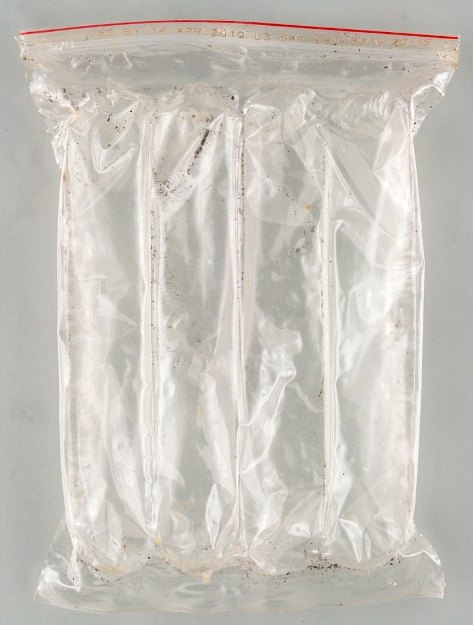 Working digitally, Layman combines layers of long exposures to get the same image stuck in a crater of a deepening visual repetition. It's something like the idea of a rose is a rose, only simultaneously, as if everyone in a crowded room suddenly said "rose." Everybody would say it a little differently.
Working digitally, Layman combines layers of long exposures to get the same image stuck in a crater of a deepening visual repetition. It's something like the idea of a rose is a rose, only simultaneously, as if everyone in a crowded room suddenly said "rose." Everybody would say it a little differently. Below, Layman's kitchen cabinet. He doesn't own that many glasses.The photo is a long scan of the image, many exposures digitally stitched together, like a quilt.
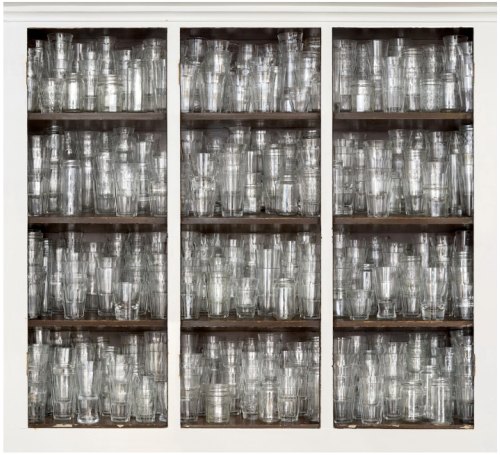 Max Beckmann said he didn't need to abstract things, because "each object is unreal
enough already." Or, for Layman, too real.
Max Beckmann said he didn't need to abstract things, because "each object is unreal
enough already." Or, for Layman, too real. More praise for Lawrimore Project: Curator Dan Cameron was in town for a lecture recently and took a day to look around with artists Gretchen Bennett and Joey Veltkamp.
Cameron's Seattle report here. Below, what he had to say about LP:
Owned by Scott Lawrimore, a former Kucera protégé, the gallery is probably the most visually stunning commercial art space in the US, outstripping any comparable venue in either Chelsea or Culver City. The space is huge, and, more importantly, has been broken up by the Seattle firm Lead Pencil Studios into a cluster of rooms, each of which has an extremely precise character. Tall ceilings and indirect natural light are balanced by a renovation that leaves just enough of the original building's quirks intact so that walking into Lawrimore feels like stepping into every artist's ideal vision of an art gallery.Lawrimore opened just in time for the recession. It's still here, but this year is his financial best. He's in the biz for the long haul, although his "visually stunning" venue is not. His lease is up next Halloween, his wife's birthday. Anyone who bets on him signing another in that space will lose money. Layman closes on Aug. 14. Lawrimore has yet to schedule a show to follow it. If you want to see the place that beats the competition in Chelsea or Culver City, go now.
Even so, I intended to see Preston Singletary: Echoes, Fire, and Shadows long before now. (It closes Sept. 19.) It's hard to admit I was hesitant to see what MOG would do with this artist, but there it is. Fortunately, I was wrong. Not once inside this mid-career survey did I think about the limitations of the galleries. Credit goes to curator Melissa G. Post and the museum's design crew. The show looks terrific.
(All images reproduce sculpture by Singletary, taken from his website. Part of this post comes from a 2002 profile published in the PI. )
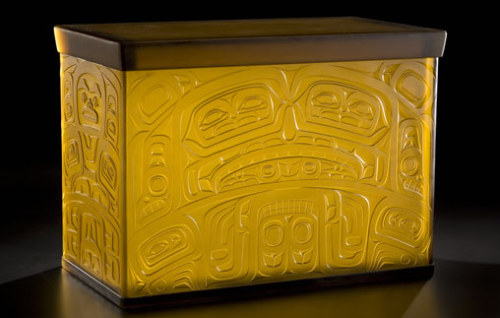 Singletary belongs to two tribes -- the Tlingit nation into which he was born on his mother's side, and glass, because glass at its core is tribal. In high school Singletary met lifelong friend Dante Marioni, whose father Paul took the boys to the counter-culture experiment in the woods that became Pilchuck Glass School. First generation artists in the studio glass movement were
frequently at the house, and Singletary met them all.
Singletary belongs to two tribes -- the Tlingit nation into which he was born on his mother's side, and glass, because glass at its core is tribal. In high school Singletary met lifelong friend Dante Marioni, whose father Paul took the boys to the counter-culture experiment in the woods that became Pilchuck Glass School. First generation artists in the studio glass movement were
frequently at the house, and Singletary met them all. After high school, glass offered an escape from college. Marioni managed to get his friend a job as night watchman at the Glass Eye. Thanks to his previous Pilchuck experience, he quickly moved onto the floor, blowing Christmas ornaments and other less seasonal decorations. Glass was beginning to take off, and Singletary found himself along for the ride.
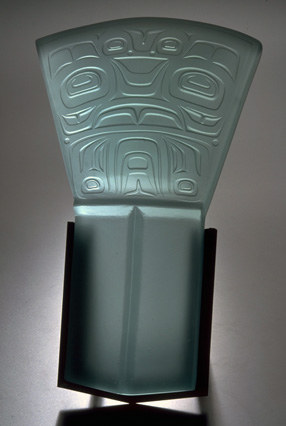 What he liked best was the company. No other form of contemporary art is such a clan venture. With music
blaring and heat pouring out of the furnaces, glass artists root for
each other, criticize, applaud and collaborate.
In 1984, after two years of glass factory work, Singletary became Ben Moore's gaffer. Moore's studio offered not only a paycheck but the chance to blow with some of the best glass artists in
the world.
What he liked best was the company. No other form of contemporary art is such a clan venture. With music
blaring and heat pouring out of the furnaces, glass artists root for
each other, criticize, applaud and collaborate.
In 1984, after two years of glass factory work, Singletary became Ben Moore's gaffer. Moore's studio offered not only a paycheck but the chance to blow with some of the best glass artists in
the world.
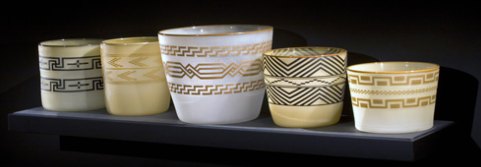 At Pilchuck, Singletary met Tony Jojola, who encouraged him to find a
way to express his tribal heritage in the context of
contemporary glass.
In Alaska, he met David Svenson, a non-Native artist who opened up elements of Tlingit style Singletary hadn't previously considered. Back in Seattle, Singletary thought the
hot glass bubble hanging precariously in front of him looked like a
Tlingit rain hat woven in cedar bark.
Eventually, he turned that shape upside down, transforming it into a
vase that all by itself would strike a familiar chord in Tlingit
circles.
At Pilchuck, Singletary met Tony Jojola, who encouraged him to find a
way to express his tribal heritage in the context of
contemporary glass.
In Alaska, he met David Svenson, a non-Native artist who opened up elements of Tlingit style Singletary hadn't previously considered. Back in Seattle, Singletary thought the
hot glass bubble hanging precariously in front of him looked like a
Tlingit rain hat woven in cedar bark.
Eventually, he turned that shape upside down, transforming it into a
vase that all by itself would strike a familiar chord in Tlingit
circles. 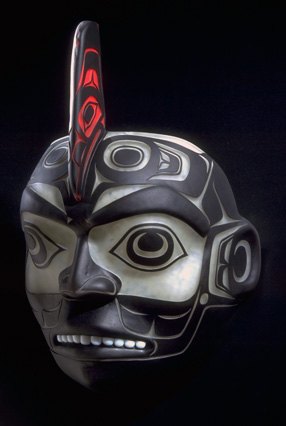 Using a sandblasting and
stenciling technique he developed himself, he carved Tlingit designs on
the outer surface.
As Ramona Gault observed in a 1998 cover article in the magazine,
"Indian Artist," the result is a "conical shape that opens upward like a
lily, its undersurface carved with an animal image that is split like a
Rorschach inkblot. When a light source is positioned above the vessel,
the carved image is cast in shadow on the surface where the vessel
sits."
Using a sandblasting and
stenciling technique he developed himself, he carved Tlingit designs on
the outer surface.
As Ramona Gault observed in a 1998 cover article in the magazine,
"Indian Artist," the result is a "conical shape that opens upward like a
lily, its undersurface carved with an animal image that is split like a
Rorschach inkblot. When a light source is positioned above the vessel,
the carved image is cast in shadow on the surface where the vessel
sits."
Beneath the stark, crisp clarity of his line, blunt old harmonies assert themselves. He uses glass to express his Tlingit heritage, merging the ancient art of glass blowing with even more ancient artistic practices of his people in order to create a 21st-century version of tribal aesthetics.
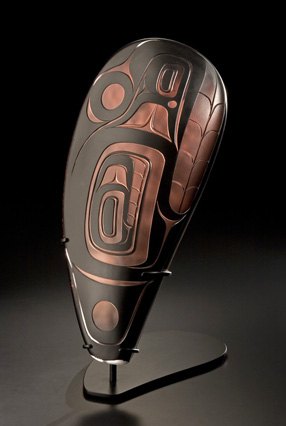 He's grateful for the Indian artists working in glass who came
before him, including Larry Ahvakana, Joe David, John Hagen, the late
Conrad House, Marvin Oliver and Susan A. Point, as well as his
contemporaries, such as Ed Archie Noisecat, who carved the masks
Singletary has used as molds.
He's grateful for the Indian artists working in glass who came
before him, including Larry Ahvakana, Joe David, John Hagen, the late
Conrad House, Marvin Oliver and Susan A. Point, as well as his
contemporaries, such as Ed Archie Noisecat, who carved the masks
Singletary has used as molds.
Thirteen years before 1963, when Singletary was born, Robert Bruce Inverarity wrote that the art of the Northwest Coast Native Americans was ``flourishing when Captain Cook, on his last voyage, reached the coast in 1778; it had passed its peak by 1910 and is almost dead today." Were he still alive, Inverarity would be happy to have been proved wrong. The glass end of the Northwest Coast tradition that began in Seattle has inspired Native artists around the world, and Singletary is among its leaders.
For those who need another reason to visit the Museum of Glass, Martin Blank's installation in the courtyard plays like frozen music.
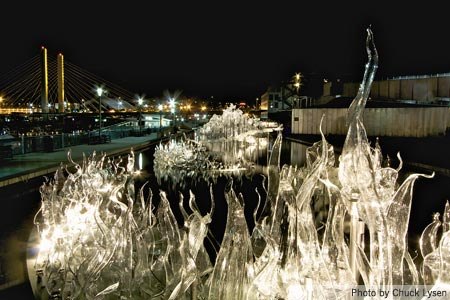
Think of a contemporary version of Mary Shelley's "Frankenstein" in which an egotistical scientist's creation is not a hideous-looking monster but a well-mannered teenage girl who quotes Shakespeare, listens to Tom Petty and uses Facebook and YouTube. This is the high-concept premise of Laurence Gonzales's lumpy new novel, "Lucy." (more)Right. It's "lumpy." When lumpy is the first descriptive in a book review, that review will fall short of rave. The same can't be said in visual art, where a critic might easily use the word as praise. In visual art, silky is not a top and lumpy a bottom. They are just another spectrum across which artists secure a place.
(Via)
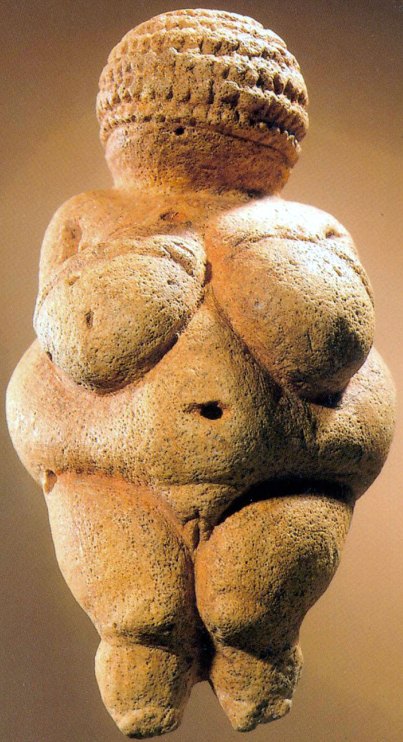
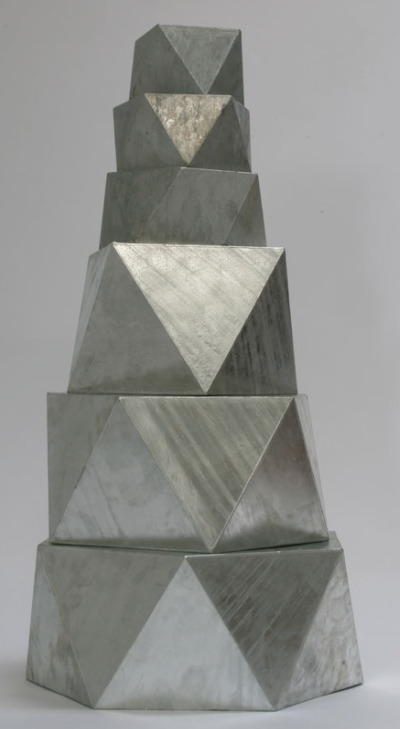 His triangles join, like cupped hands, to make a bowl.
His triangles join, like cupped hands, to make a bowl.FEAST BOWL, 2009 Painted wood 25 x 21 x 8 inches $7,500
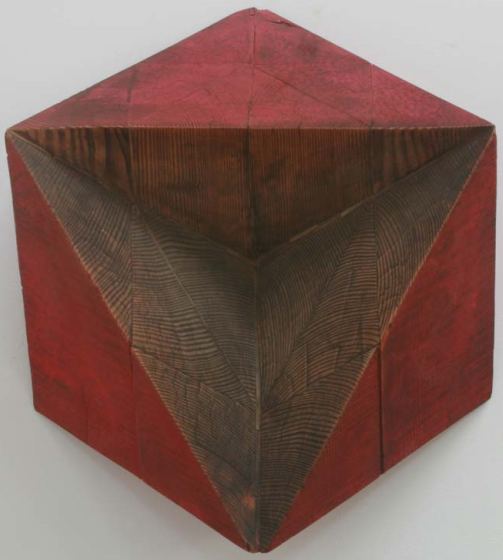 He moves back and forth between wood and steel, from carving into a solid to manipulating the empty skin of metal. In metal he can extend and twist a triangle. When triangles try to become a square, they fail, just as, in Millett's mind, the American effort to remake Iraq in its image will fail.
He moves back and forth between wood and steel, from carving into a solid to manipulating the empty skin of metal. In metal he can extend and twist a triangle. When triangles try to become a square, they fail, just as, in Millett's mind, the American effort to remake Iraq in its image will fail. OPEN SQUARE, 2009 Welded steel 38 x 40 x 6 inches
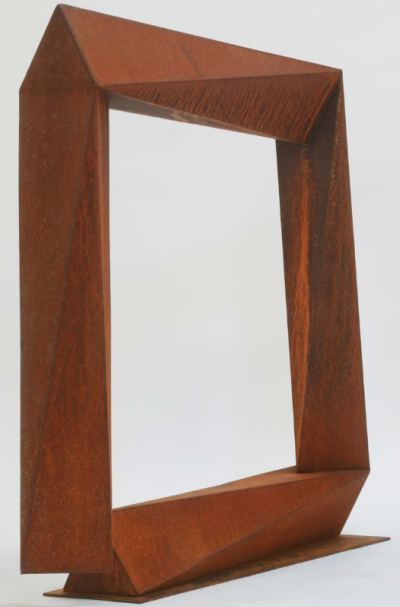 He makes no models or drawings for his sculpture, preferring to work directly with what he calls the "real stuff." While real stuff is in his hands, real stuff is in his head. His current exhibit at Greg Kucera Gallery, titled Skyscrapers, is a tribute to architects who blur the line between sculpture and buildings, making art that people inhabit high in the sky. With a tough elegance that compromises on nothing, his sculptures and
drawings collaborate to create a weathered sense of place.
Lisa Corrin called his
work "disembodied architecture," and that's certainly part of it.
He makes no models or drawings for his sculpture, preferring to work directly with what he calls the "real stuff." While real stuff is in his hands, real stuff is in his head. His current exhibit at Greg Kucera Gallery, titled Skyscrapers, is a tribute to architects who blur the line between sculpture and buildings, making art that people inhabit high in the sky. With a tough elegance that compromises on nothing, his sculptures and
drawings collaborate to create a weathered sense of place.
Lisa Corrin called his
work "disembodied architecture," and that's certainly part of it.In HOTSEAT (2010 Welded steel 60 x 22 x 12 inches), his imaginary architecture becomes an emblem of mourning. The moire-pattern of its skin function as windows, something like the Bridge of Sighs but more what prisoners in their Guantánamo Bay holding cells might see through chain-link. The few accused with evidence of substantial crimes mingle with those who were in the wrong place at the wrong time and those who are guilty of thought crimes.
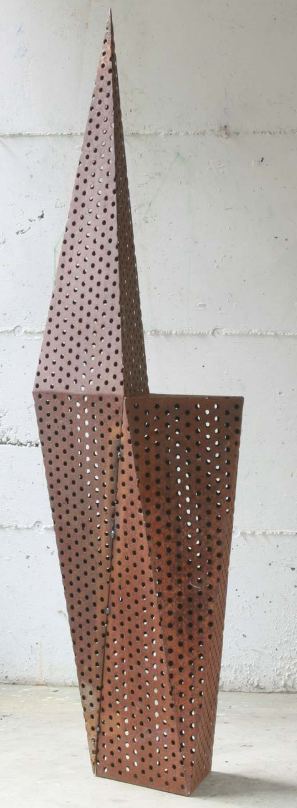 Decades ago, traveling in Iran, Millett was struck with the spare
beauty of the cities, how homes and mosques had almost no furniture, and
how light streaming through windows was filtered by latticework grills,
giving the emptiness inside a patterned sense of form.
An affinity for Middle Eastern architecture and decor is fundamental to
his work. It's hardwired into what he does. He's not as much influenced
as drawn to admire.
Decades ago, traveling in Iran, Millett was struck with the spare
beauty of the cities, how homes and mosques had almost no furniture, and
how light streaming through windows was filtered by latticework grills,
giving the emptiness inside a patterned sense of form.
An affinity for Middle Eastern architecture and decor is fundamental to
his work. It's hardwired into what he does. He's not as much influenced
as drawn to admire. That admiration is the subtext of his modernist form. Following Brancusi and Noguchi, his work is more elemental than minimalist, rooted not just in nature but in human nature. Millett has his rich color sense largely in check, giving free rein only to rust. The range of his rust tonalities is a marvel, from cold and dark to dappled across a fluid expanse and warm in places as oven-baked bread.
Through August 14.
Following William Blake, M. Ward turned Buddy Holly's song of innocence into one of experience. I love how Ward lags slightly behind the beat, taking the plunge but knowing it won't go well. The lyrics make more sense Ward's way: "When you say, I love you, I say, rave on."
After Comedy Central censored an episode of "South Park" that featured Muhammad in a bear suit, The Simpsons responded:
 Who were they afraid of? The usual thugs ready to kill anyone who doesn't see the world their way. Seattle artist Molly Norris attempted to lighten the issue with humor. Can't depict Mohammad? How about as a purse, a cherry or a spool of thread?
Who were they afraid of? The usual thugs ready to kill anyone who doesn't see the world their way. Seattle artist Molly Norris attempted to lighten the issue with humor. Can't depict Mohammad? How about as a purse, a cherry or a spool of thread?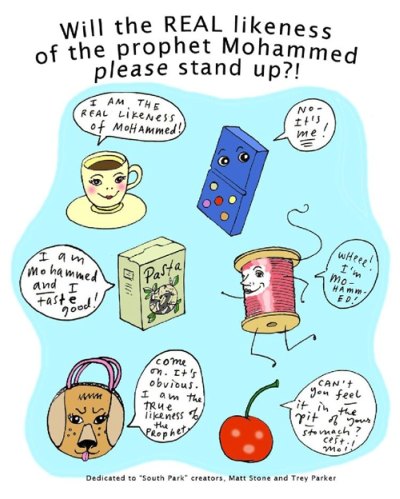
.
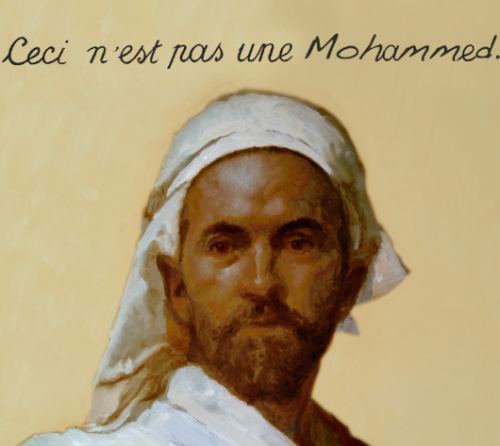 Then the haters showed up and filled pages with their contempt for all Muslims. Dismayed, Norris tried to shut it down. Too late, because hate also calls to hate.
Then the haters showed up and filled pages with their contempt for all Muslims. Dismayed, Norris tried to shut it down. Too late, because hate also calls to hate.According to a Sunday story in the New York Daily News, Yemeni-American cleric Anwar al-Awlakih has singled her out for death, calling her a "prime target." The FBI told her they are taking the threat very seriously.
If that isn't bad enough, Huffington Post columnist Eric Lurio weighed in with his own attack on Norris, saying that her interest in gentle satire makes her a wimp and her interest in staying alive makes her a coward.
Dear Mr. Lurio: If you're so interested in getting murdered, why don't you go taunt a killer or two? How about thousands of killers? Want your name in their rifle sights? I don't know if you're a coward, but I do know you're a bully, a bore and a fool. Crawl back under your rock and leave Molly Norris alone.
Below, Norris in 2008, on the right. On the left, her collage, Nat King Cole, 2008, Paper, wire, gator board, paint, and glue, 60 in. x 32 in. x 9 in.
IMAGE REMOVED
I am curious, "Pro-Chihuly", and others - please name a single Chiluly artwork that you consider a masterpiece. Or even one that is a great work of art that deserves to be pictured in the next version of Janson. Cause I have seen a lot of em, and they are all middling examples of production craft, from my viewpoint. And, having worked in the production craft world, proudly, for over 15 years, I have seen a LOT of production craft.In other words, name that masterpiece. Masterpiece? If the word were a game, nobody would play. Not only is it freighted with internalized exclamation points, it has devolved into a sales tool. When auctioneers use it, they mean anything that opens at $20 million.
There are, without doubt, Glass ARTISTS out there- Therman Statom, Richard Marquis, Larry Bell, Josiah McEleney, William Morris, Mario Mertz, Lucas Samaras, and lots more artists making sculptures from glass. And there are quite a few excellent, unrepentant craftsmen and women who make objects of utility and beauty from glass. A good two or three dozen of whom I would rank well above Chihuly in the "importance" scale, when it comes to glass art.
Don't get me wrong - I, like everyone else, wore that Chihuly oil in the sixties- I still like the smell. But aside from his big assemblage pieces, not a single one of his works had any character, or soul, or presence to lift it from run of the mill production glassblowing, and to counteract its failings, it falls back on the old crutch of the essential beauty of the medium.
The big groupings work, I suppose, in a classic Morris Lapidus, More is More kind of way, but compared to other artists who overwhelm with volume, like Tony Cragg or Armand, they lack all the cultural signifiers, history, meaning, and layers of information that make a good Cragg or Armand hold up. As they say in Texas- All hat, no cows.
For the purposes of answering Niemi, however, I'll say it's a piece that rises from a significant body of work to achieve the artist's potential. Since Chihuly is noted for his riotous color, the pair of chandeliers hanging at the ends of the block-long lobby in Seattle's Benaroya Hall might seem an odd choice. They are muted yellow and white silver. But Chihuly's power as a colorist is most evident when he dials down.
DALE CHIHULY BENAROYA HALL GOLD CHANDELIER, 1998 15 x 10 x 10'
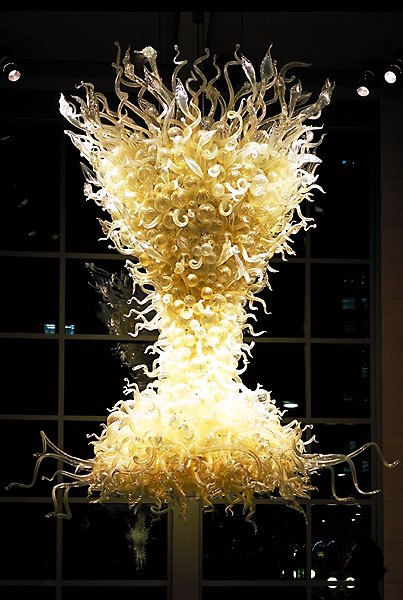 BENAROYA HALL, SEATTLE, WA
DALE CHIHULY
BENAROYA HALL SILVER CHANDELIER, 1998
20 x 10 x 10'
BENAROYA HALL, SEATTLE, WA
DALE CHIHULY
BENAROYA HALL SILVER CHANDELIER, 1998
20 x 10 x 10'
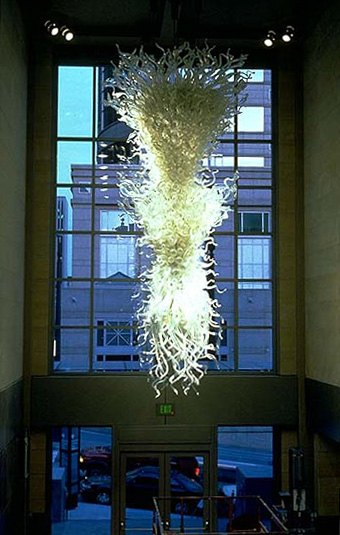 Detail, SILVER CHANDELIER
Detail, SILVER CHANDELIER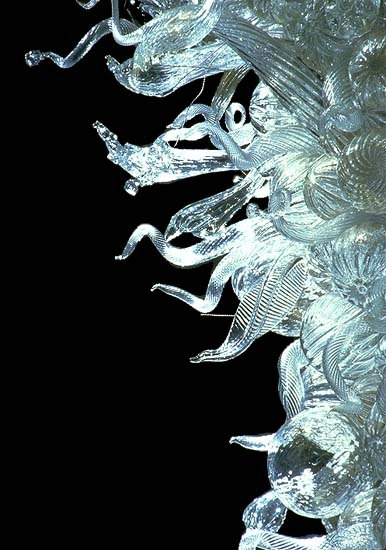 Pure as Communion wafers, these chandeliers have bawdy hearts. They push the idea of the decorative past beauty, past reason and past Surrealism, into a
kind of hydroponic glass-art gardening.
They reveal his extravagance for what it
is, the urge to make a life form. He wants to freeze the motion of hot
glass without stopping its molten flow.
Pure as Communion wafers, these chandeliers have bawdy hearts. They push the idea of the decorative past beauty, past reason and past Surrealism, into a
kind of hydroponic glass-art gardening.
They reveal his extravagance for what it
is, the urge to make a life form. He wants to freeze the motion of hot
glass without stopping its molten flow.The decorative remains controversial in contemporary art.
Kenneth Baker:
A fair-minded critic must ask why Chihuly's work cannot be taken seriously as sculpture. Sculptors of acknowledged importance have at times made good use of glass: Robert Smithson (1938-1973), Christopher Wilmarth (1943-1987), Barry Le Va, Kiki Smith. But all of them shunned Chihuly's forte: decoration. (more)Baker is fair-minded, but he came of age during the height of Minimalism, honed his vision then and never expanded it. Why should he? Life is short. Baker is clean, but attacks on the plan to create a Chihuly fun house in Seattle Center tend to be dirty. They're not about the man's art. They're about him.
The Stranger doesn't bother with aesthetics in its unremitting campaign to discredit him. It expresses something ugly in the core of Seattle's character, a desire to cut large-scale locals down to size. After Chuck Close first hit it big in New York, he stopped by First Thursday to say hello to old friends. Close said later that few would talk to him. We like to think we've changed since then, but have we?
Good piece on Chihuly by Tina Oldknow.

Clarke & Dawe, The Front Fell Off
This defiantly ambiguous object could be seen in a number of ways. Is it Damien Hirst redone as taxidermical stand-up comedy (its theme, after all, is pretty well identical to the title Hirst gave to his original, Saatchi-sponsored shark in formaldehyde, namely The Physical Impossibility of Death in the Mind ofSomethingSomeone Living)? Or is it Monty Python's Dead Parrot sketch reworked as a piece of Conceptual Art? Then again, if Cedar Lewisohn is right, maybe Monty Python's parrot sketch was a piece of Conceptual Art in the first place. (more)
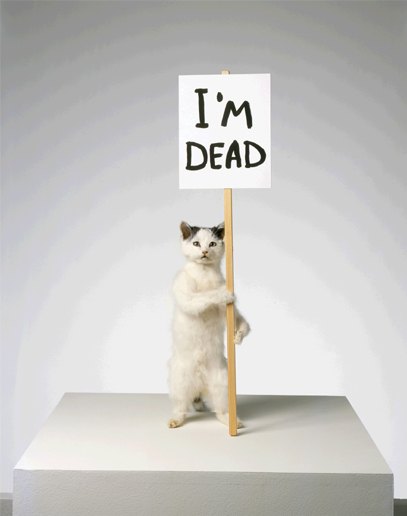
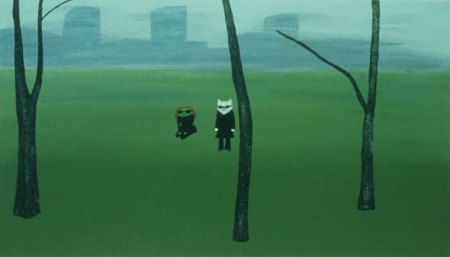
 Mike Simi Beef Stew Monster
Custom fabricated robotics and software program, cast plastic, wood 2007 (Video here)
Mike Simi Beef Stew Monster
Custom fabricated robotics and software program, cast plastic, wood 2007 (Video here)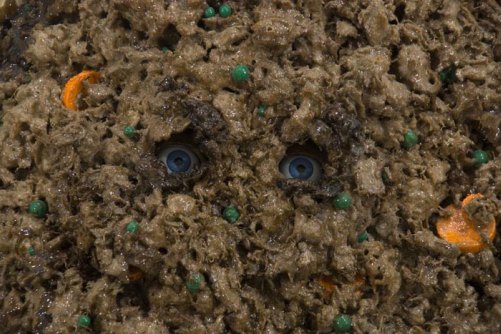
Forest, 2008 MDF, Epoxy, metalflake 84" x 62" x 1"
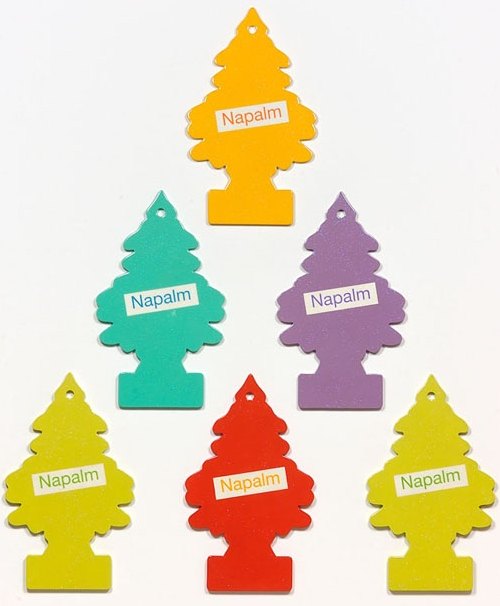 Robinson is part of Txt at the James Harris Gallery.
Robinson is part of Txt at the James Harris Gallery. Anthony Discenza impersonates street signs. His idea of a directional assist is to point to everywhere at once.
Everything You've Heard, 2009 Vinyl on aluminum, Ed. of 5 24" x 18"
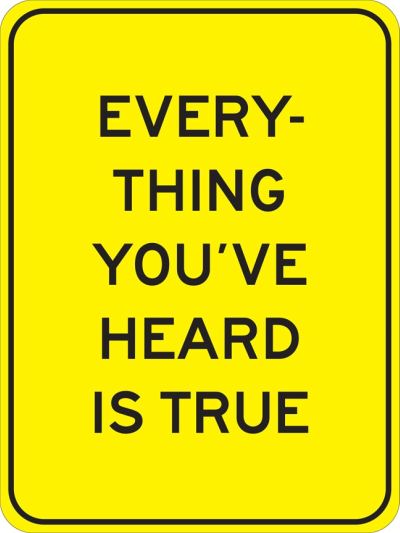 Unfamiliar Sensations, 2008
(Installation View) Vinyl on aluminum, Ed. of 5
24" x 18"
Unfamiliar Sensations, 2008
(Installation View) Vinyl on aluminum, Ed. of 5
24" x 18"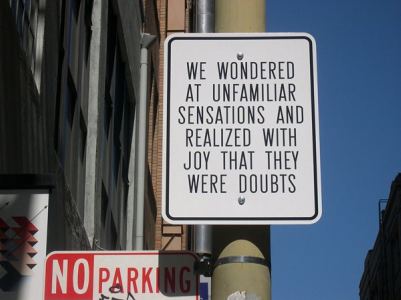 Who says the novel is dead?
Who says the novel is dead?Matthew Buckingham Narrative, 2001 Wall Text
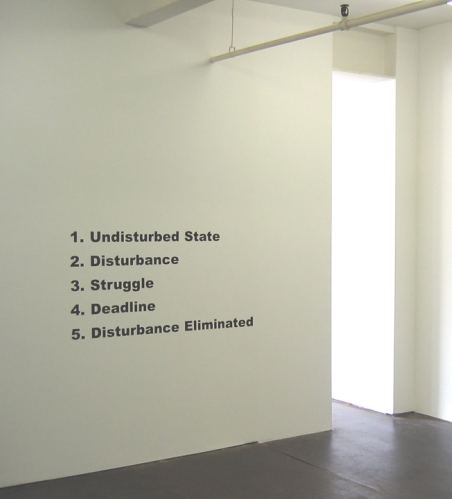 Lauren Grossman
explores the mechanisms of blind faith
through its core imagery. Big steel birds, their feet fused into
cast-iron perches, their bodies cast in a blizzard of lettering, are emblems of fundamentalist love songs. They sing
to their own and are deaf to others.
Lauren Grossman
explores the mechanisms of blind faith
through its core imagery. Big steel birds, their feet fused into
cast-iron perches, their bodies cast in a blizzard of lettering, are emblems of fundamentalist love songs. They sing
to their own and are deaf to others. Even Shorn, 2005 enameled cast iron, steel, rubber, brass 49" x19" x 21"
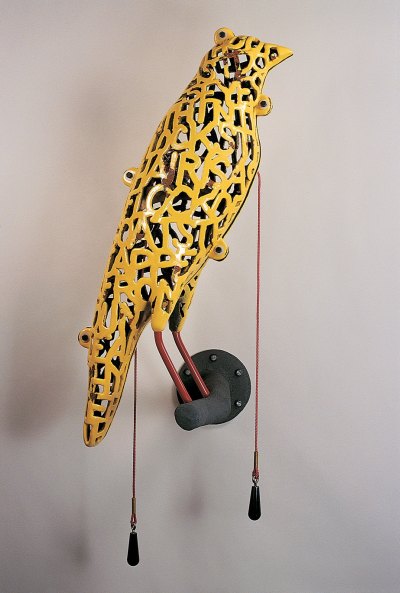 Finally, a jungle-fever designer object. (Note to the object in question: If he/she cared about you, you'd be called boyfriend, not black boyfriend.)
Finally, a jungle-fever designer object. (Note to the object in question: If he/she cared about you, you'd be called boyfriend, not black boyfriend.)Brad Adkins Black Boyfriend, 2006 Neon 4" x 47"\
 Through Aug. 20.
Through Aug. 20.How many other proposals were on the table?
None. There are eight others now, some of them excellent. None come with their own funding, which Jen Graves says is a question of timing, as the others didn't have a "year to hone their proposal."
This is, of course, untrue. Everybody had the same time, from late 2007. The prospect of cracked asphalt and weedy abandon was increasingly obvious to all, given the economy and the necessity of budget cuts. (More on those cuts here.) The Fun Forest was over. Given the fact that the city is struggling to mow its lawns and keep fresh water in its wading pools, what could have led anyone to suspect that the city could replace a former money-maker with a money drain?
Wednesday night, there's a public meeting at Seattle Center's Center House. Architects of all proposals will make their pitches from 4:30 to 6 p.m., followed by open comment.
I've already commented on the Chihuly plan, here and here. I'll leave it at that, except to say the original proposal now includes additions. Wright plans to put up $1 million for the creation of artist-designed playground equipment, including fabrication and development of the site, as well as development of additional green/open space. The Chihuly team has also come up with a program to partner with Seattle Public Schools, Pilchuck Glass School, Pratt Fine Arts Center and the ArtsFund.
Team Chihuly is asking for a 5-year-lease. If the results fail to dazzle the public (and bring in from $300,000 to $500,000 annually to city coffers), its plug can be pulled, leaving the building that's already there and a garden. (Even if he's a raging success, the lease will terminate at 20 years.)
I'd like to see the Chihuly approved, partly because I'd also like to see one or even two of the other proposals given a chance as well. When museums sell art from their collections, best practices encourage them to use those funds to collect more art. If the city is taking in $300,000 to $500,000 from Chihuly's project, why can't a hefty share of that money be used to underwrite other uses of the former Fun Forest?
I'd give the nod to Open Platform and/or the Northwest Native Culture Center. The Fun Forest was 5 acres. The Chihuly center will be 1.5 acres. Math is not my strong suit, but I believe that leaves 3.5 acres for other uses. Think as well as, not instead of.
Kangas started with what appeared to be a compliment, congratulating Lyons for packing the space. As Kangas is aware, that praise needs to go to the curators. Left to his own devices, Lyons favors spare. Kangas was born too late for salon style but does his best to revive it. Moving into the back room, he looked down on a group of Jaq Chartier's small paintings lying on top of a table. "Are these trivets?" he asked.
Chartier 7 Stain Lines 2009, 6 x 6 inches
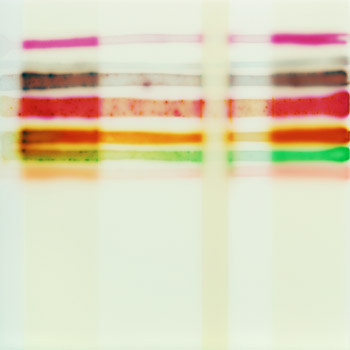 Lyons was not amused, but as Powhida's Seattle dealer, he chuckled over the drawing reproduced below, a visual rant on the abilities of painter Dana Schutz. Powhida followed with a hex on her dealer, Zach Feuer, who took neither sally lying down. (Powhida told Jen Graves it was "like hooking a shark." )
Lyons was not amused, but as Powhida's Seattle dealer, he chuckled over the drawing reproduced below, a visual rant on the abilities of painter Dana Schutz. Powhida followed with a hex on her dealer, Zach Feuer, who took neither sally lying down. (Powhida told Jen Graves it was "like hooking a shark." )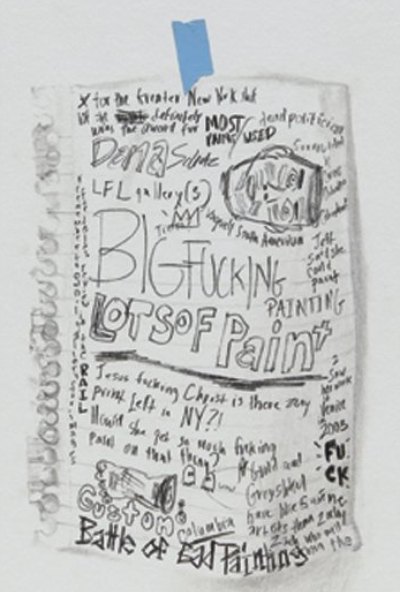 Powhida takes pains to point out that he is not William Powhida, the heckoring voice in his frantic yet silky drawings. No, outside his studio, he's a mild-mannered high school art teacher, friend to all creatures great and small. As he told David Goodman:
Powhida takes pains to point out that he is not William Powhida, the heckoring voice in his frantic yet silky drawings. No, outside his studio, he's a mild-mannered high school art teacher, friend to all creatures great and small. As he told David Goodman:In my studio, I am trying to capitalize on controversy, by challenging the establishment. The other day, a small group of seniors were discussing the yearbook. They didn't want to include the other grades because they wanted the yearbook to only be about them. Listening to them, I could hear that demanding, entitled voice that comes through in my drawings--the one that only wants to satisfy his desires. In my art, I grapple with that attitude encountered as an artist. The drawings, specifically my letters, work on two levels: a ridiculous self-assurance, I'm a genius; and a pathetic, needy voice who might just need a hug.Powhida's art world is a corrupt carnival show. Now that he's in the ring, he's as worried as any bearded lady about losing his spot. That spot depends upon his edge, and applause from his targets blunts it. If he calls the ringmaster a clown and the ringmaster pats him on the back, who's the clown? Not the ringmaster, who's in on the joke.
The search for a new target brings us Magicality. The spirit of high-school teachers hovers over the premise, which compares/contrasts religious artifacts with artworks. Were Powhida and Trosko really in the classroom, they'd let the students reach their own conclusions. Because the curators are in a gallery, however, they need spoon feed the audience the manifesto. It's available in leaflet form at the front door in the hopes somebody might pick it up as they exit and give it a glance while rooting around for change to feed the meter.
We desire to illuminate and challenge the parallels between the disciplines of art and magic(k). Both disciplines share belief systems that rely on a priori knowledge and metaphysics. In order to explore the parallels, we have sought out artifacts of practices rather than traditional art works. The difference between an artifact and an art work is dependent on our perception of an illusion or delusion...Nontraditional in this case means unlikely to sell. In the art world, of course, unsalable is a moving target. Seek it out, it proves elusive. Avoid it, and you hand your dealer a storage problem. I feel confident, however, that Trosko's amulets will be available for him to pick up at the show's conclusion. Well done, Mr. Trosko!
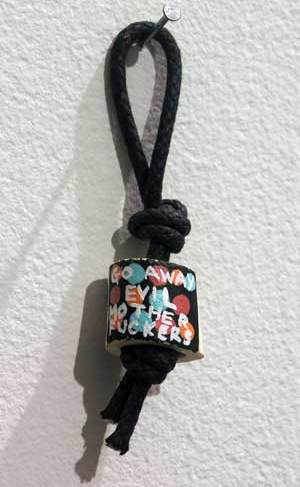 As far as Powhida's fare, there's nothing here I haven't seen before.
As far as Powhida's fare, there's nothing here I haven't seen before. New target, old hex:
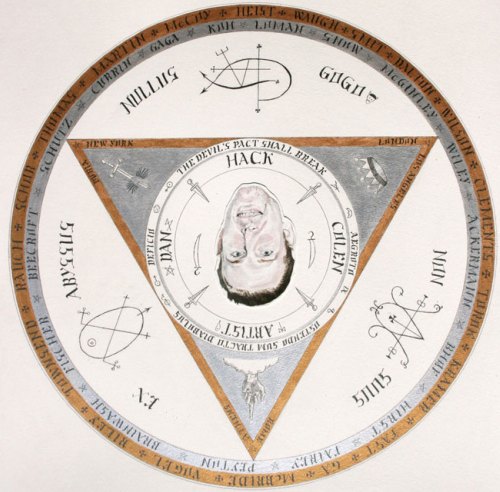 Powhida has an answer for this crass, what-have-you-done-for-me lately critique: (via)
Powhida has an answer for this crass, what-have-you-done-for-me lately critique: (via)My intention is to critique how the art market consumes people and turns them into commodities to be traded. I'd like to think my work will be remembered because it calls attention to that system, more than cementing the reputations of these artists. You can look back through issues of Artforum and not recognize any of the artists. As Jerry Saltz has said, the art world eats it's young.There are a few pieces in the show that work, whether they're called hexes, exorcisms or art. Congratulations to Letha Wilson for her anti-bombast, pseudo-sublime:
Wilson, Right Back at You Digital C-print, flashlight, rocks, 42 x 30 x 46 inches, 2009
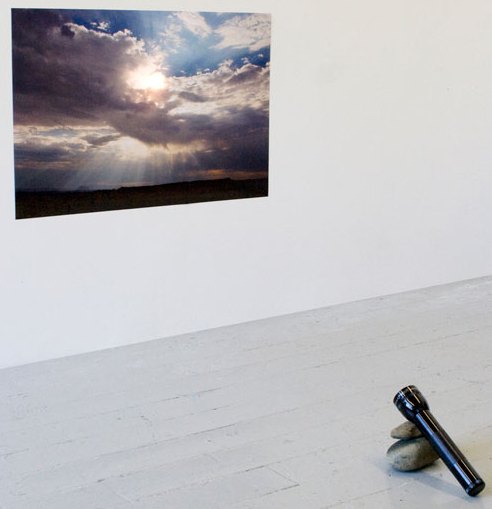 Jade Townsend's house has a nursery-rhyme appeal: Here is the church, here is the steeple. Open the doors and out come the people (BOOM).
Jade Townsend's house has a nursery-rhyme appeal: Here is the church, here is the steeple. Open the doors and out come the people (BOOM).Wilson, Of Alchemy, Dreams and Revolution; Ticking Like A Fucking Bomb Brick Gold krylon, lauan, wiggle board, ultralite, black bandanas, balsa foam, white latex primer, flat white krylon and paint marker, 16 x 11 x 18 inches, 2007, Courtesy Priska C. Juschka Fine Art
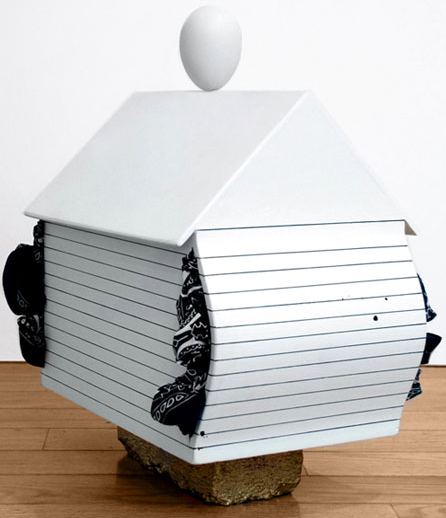 Other surprises? I was surprised that Powhida's exorcism in chalk was still largely unsmudged on the floor nearly a week after the opening. People tiptoe around it as if it were a sacred thing. Its target is Dale Chihuly's project at Seattle Center. Note to Powhida: There is such a thing as being a little bit too hip.
Other surprises? I was surprised that Powhida's exorcism in chalk was still largely unsmudged on the floor nearly a week after the opening. People tiptoe around it as if it were a sacred thing. Its target is Dale Chihuly's project at Seattle Center. Note to Powhida: There is such a thing as being a little bit too hip. No one can say the same about Matthew Kangas. Month in and out, he attends nearly every gallery in Seattle and manages to invent fresh ways to insult the dealers. He's their cross to bear. The rest of us are just too fucking nice.
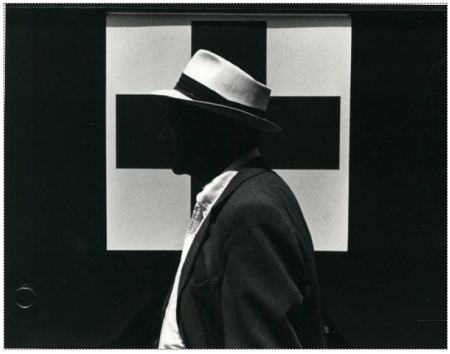 Steve Davis Fred from RAINIER SCHOOL
Home for Developmentally
Disabled 2005-2006
Steve Davis Fred from RAINIER SCHOOL
Home for Developmentally
Disabled 2005-2006 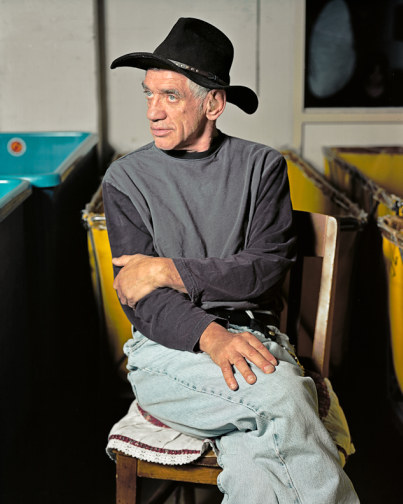 Oliver Jackson Untitled (7.21.03), 2003
Water-based pigments and silver leaf on unprimed cotton canvas, 65 x 64-1/2 in.
Oliver Jackson Untitled (7.21.03), 2003
Water-based pigments and silver leaf on unprimed cotton canvas, 65 x 64-1/2 in.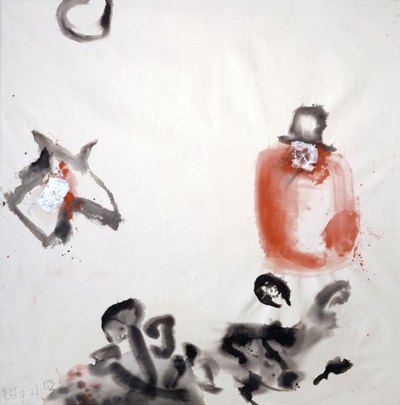 Grant
Barnhart Voorbereiding voor de Dreigende Zwerm
11×14, Acrylic on canvas (2009)
Grant
Barnhart Voorbereiding voor de Dreigende Zwerm
11×14, Acrylic on canvas (2009)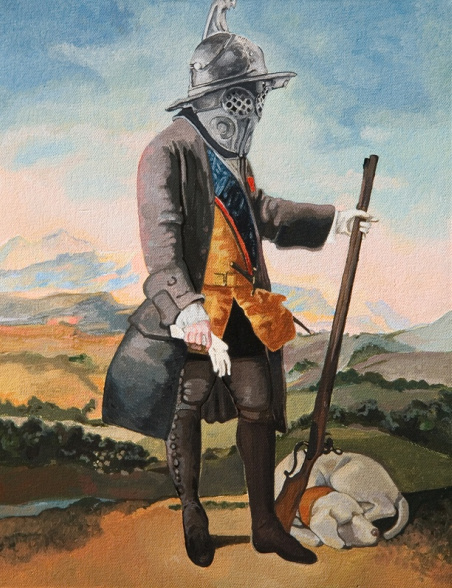 Justin Colt Beckman Untitled
digital collage of the artist's face on found photo, 2008
Justin Colt Beckman Untitled
digital collage of the artist's face on found photo, 2008 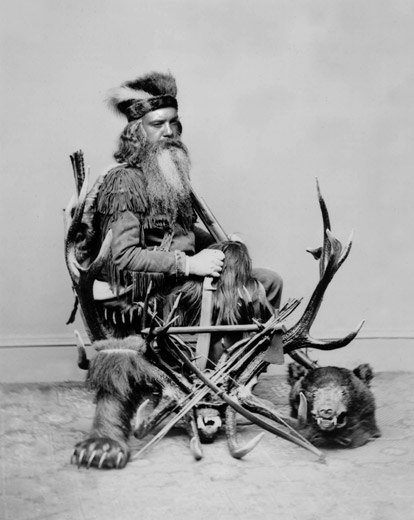 Christian Rex van Minnen
Christian Rex van Minnen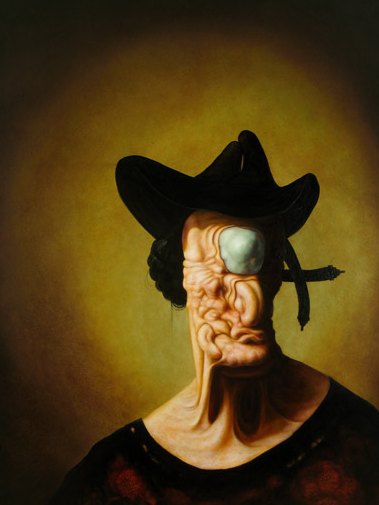 Akio Takamori Sea Serpent, 2009
Digital Inkjet Print and Lithography Ed. of 35
41 1/2 " x 26"
Akio Takamori Sea Serpent, 2009
Digital Inkjet Print and Lithography Ed. of 35
41 1/2 " x 26"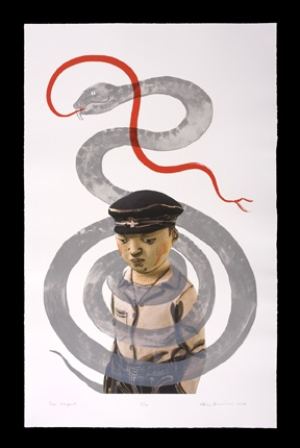 Matt Browning Honest Labor Pt. II, 2008
Bicycle, bicycle trainer, wood, car alternator,
battery, inverter, extension cord, refrigerator
Dimensions variable
(One night performance)
Matt Browning Honest Labor Pt. II, 2008
Bicycle, bicycle trainer, wood, car alternator,
battery, inverter, extension cord, refrigerator
Dimensions variable
(One night performance)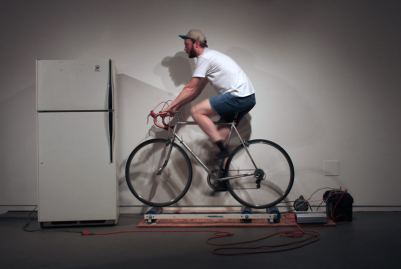 Buddy Bunting 2007, ink and pencil on paper, 5.5 x 6.25 in
Buddy Bunting 2007, ink and pencil on paper, 5.5 x 6.25 in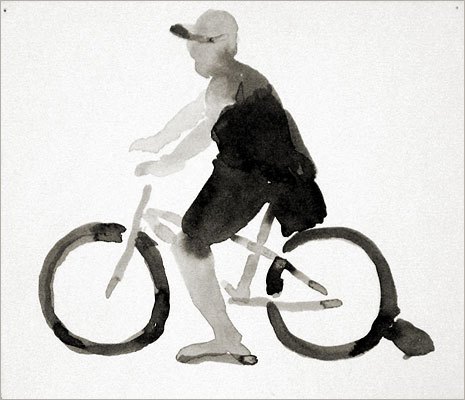 Chris Crites Mugshots, Burglary 9"w x 10.5"h
Chris Crites Mugshots, Burglary 9"w x 10.5"h
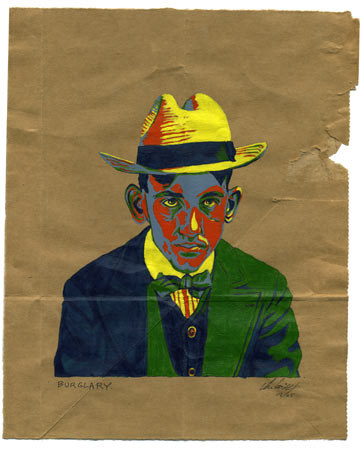 Jack Daws VIVA ZAPATA, 2007
Plastic tub, acrylic on aluminum, lacquer
18 x 16 x 22 inches
Jack Daws VIVA ZAPATA, 2007
Plastic tub, acrylic on aluminum, lacquer
18 x 16 x 22 inches 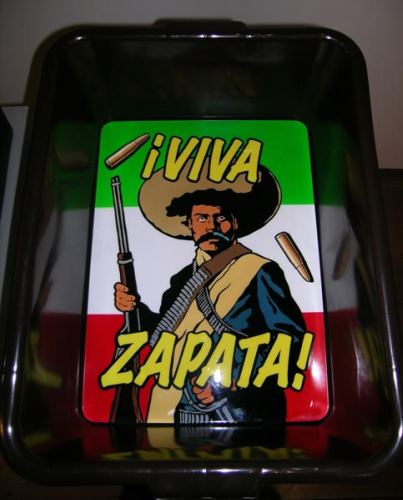 Roger Shimomura ETERNAL FOREIGNER #8, 2006
Acrylic on canvas
60 x 18 inches
Roger Shimomura ETERNAL FOREIGNER #8, 2006
Acrylic on canvas
60 x 18 inches SuttonBeresCuller Duwamish II, 2009
Photograph face-mounted to acrylic
24 x 16 inches
Edition of 7 + 2 A.P.
SuttonBeresCuller Duwamish II, 2009
Photograph face-mounted to acrylic
24 x 16 inches
Edition of 7 + 2 A.P.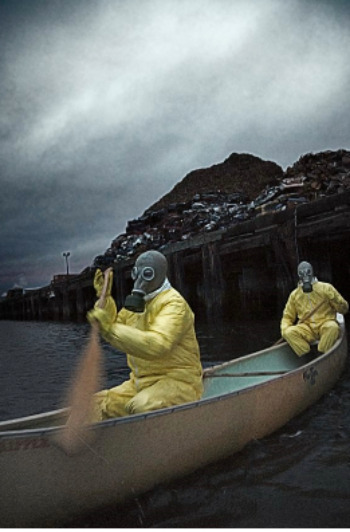
Robin Williams
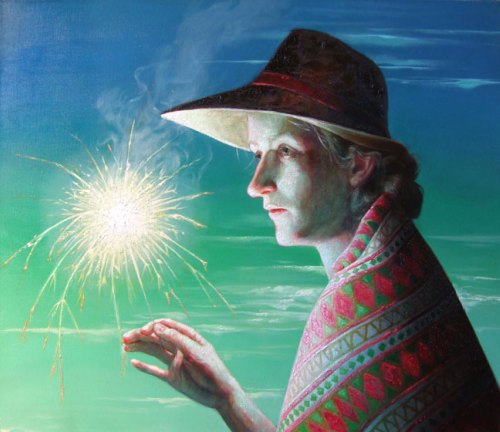 Zoe Strauss
Zoe Strauss"I am lonely, lonely.
I was born to be lonely,
I am best so!"
from Danse Russe, William Carlos Williams
Men make their own history, but they do not make it as they please; they do not make it under circumstances of their own choosing, but under circumstances existing already, given and transmitted from the past.Livia Marin
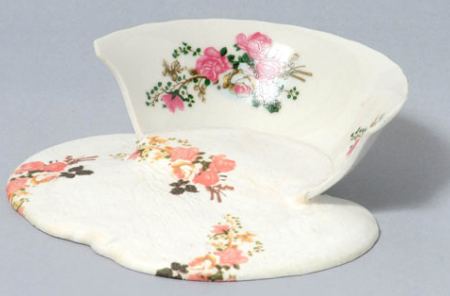
On the southwest corner is Henry Moore's Vertebrae from 1968, in place since 1971.
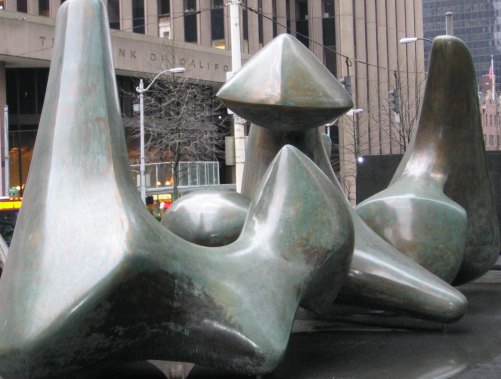 Behind and just north of Vertebrae a large acrylic abstraction by Sam Francis hung in the building's lobby, fully visible from the street. It's a grid undermined by splatters of colored light, 18.8 feet high and 26.6 feet wide, created in 1979 and purchased in 1980.
Behind and just north of Vertebrae a large acrylic abstraction by Sam Francis hung in the building's lobby, fully visible from the street. It's a grid undermined by splatters of colored light, 18.8 feet high and 26.6 feet wide, created in 1979 and purchased in 1980.We wanted to make you aware that on June 26th, the Sam Francis painting located in the lobby will be permanently removed to become part of the bank's Art in our Communities program and will initially be loaned to the Mint Museum of Art in Charlotte, NC in conjunction with a large exhibition of contemporary art from the bank's collection.The Francis is a last-minute addition at the Mint. On its website, the Mint doesn't mention it. Stehr didn't return several phone calls, but Britney Sheehan, media relations for the bank, did. She noted that instead of occupying several floors of the building, BofA is now limited to part of the lobby. Aside from joining the bank's exhibit at the Mint, Francis' painting has nothing else inked on its dance card. I asked Sheehan for an image. The next day, we had the following exchange.
Sheehan: We don't have an image.
Me: You've owned the painting since 1980 and don't have an image?
Sheehan: Yes.
Me: You can tell me that you won't send me one, but you shouldn't say you don't have one. It isn't believable.
Sheehan: An image is not available.
Below, a bad image from Google Earth:
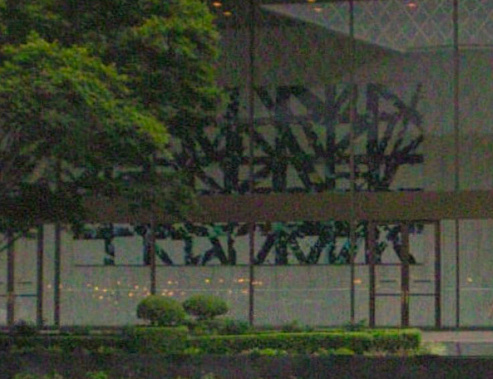 The bank has good reason for not wanting to share. In 1986, Seafirst Bank and JMB Management Company admitted that they had sold Vertebrae to a private collector in Japan. Both Seafirst and JMB were swamped by angry calls.
The bank has good reason for not wanting to share. In 1986, Seafirst Bank and JMB Management Company admitted that they had sold Vertebrae to a private collector in Japan. Both Seafirst and JMB were swamped by angry calls. Linda Farris and David Mendoza organized protest marches and petitions. ("Henry Moore, he's our man, we don't want him to go to Japan.") Unfavorable press coverage (largely from me) broke out of the arts section and began appearing on the front page. The city stepped in, blocking the sculpture's removal on a technicality (work permits were not in order). After 8 tons of bad publicity over a two-month period, JMB and Seafirst gave the Seattle Art Museum the money (twice the $1 million they'd received) to buy back the sculpture from its new owner and guarantee it a permanent Seattle home.
Will the Francis be sold after its star turn at the Mint? Nobody's saying. Sheehan emphasized that the bank continues to support the arts in Seattle. She said in 2009 it donated $300,000 to arts in Seattle and Bellevue. In the last 10 years, she noted it has donated $900,000 to ArtsFund.
That's an admirable past, but the loss of the Francis is a doleful comment on the future.
Meiro Koizumi at Open Satellite:
 Zoe Strauss
Zoe Strauss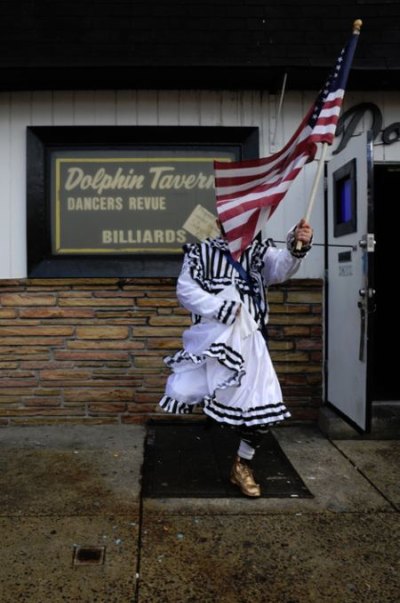 Jack Daws, three times
Jack Daws, three times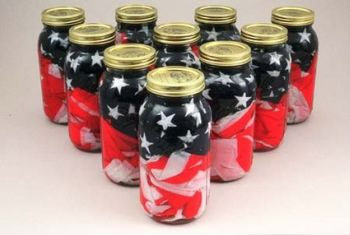
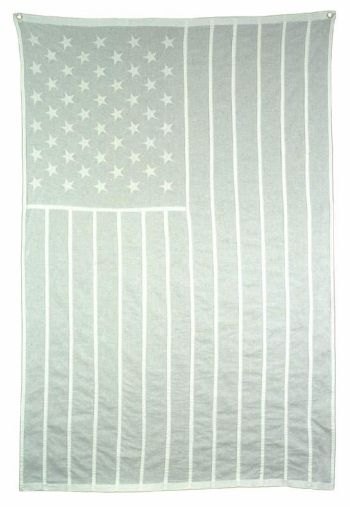
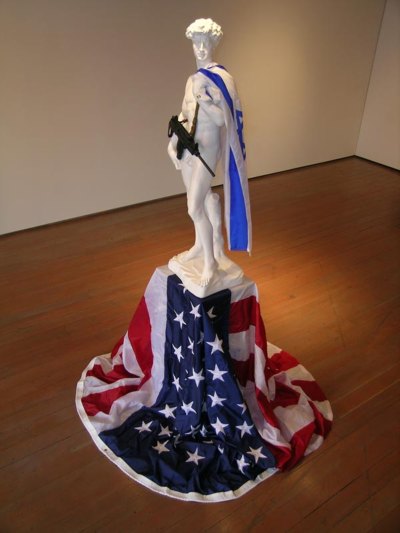 Ross Palmer Beecher, two times
Ross Palmer Beecher, two times
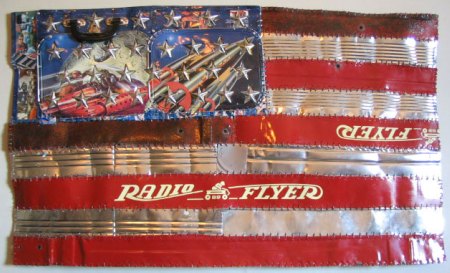

Allen Ginsberg - from America
America I've given you all and now I'm nothing.
America two dollars and twenty-seven cents January 17, 1956.
I can't stand my own mind.
America when will we end the human war?
Go fuck yourself with your atom bomb.
I don't feel good don't bother me.
I won't write my poem till I'm in my right mind.
America when will you be angelic?
When will you take off your clothes?
When will you look at yourself through the grave?
When will you be worthy of your million Trotskyites?
America why are your libraries full of tears?
America when will you send your eggs to India?
I'm sick of your insane demands.
When can I go into the supermarket and buy what I need with my good looks?
America after all it is you and I who are perfect not the next world.
Your machinery is too much for me.
You made me want to be a saint...
America stop pushing I know what I'm doing.
America the plum blossoms are falling...
I sit in my house for days on end and stare at the roses in the closet...Asia is rising against me.
I haven't got a chinaman's chance.
I'd better consider my national resources.
My national resources consist of two joints of marijuana millions of genitals
an unpublishable private literature that goes 1400 miles and hour and
twentyfivethousand mental institutions.
I say nothing about my prisons nor the millions of underpriviliged who live in
my flowerpots under the light of five hundred suns.
I have abolished the whorehouses of France, Tangiers is the next to go.
My ambition is to be President despite the fact that I'm a Catholic.America how can I write a holy litany in your silly mood?
I will continue like Henry Ford my strophes are as individual as his
automobiles more so they're all different sexes ...
America this is quite serious...
It's true I don't want to join the Army or turn lathes in precision parts
factories, I'm nearsighted and psychopathic anyway.
America I'm putting my queer shoulder to the wheel.
Norman Rockwell's cheerful America has lately acquired a startling relevance both inside and outside the art world, in part because it symbolizes an era when connectivity did not require a USB cable...
Rockwell's paintings are easy to recognize. In the years surrounding World War II his covers for The Saturday Evening Post depicted America as a small-town utopia where people are consistently decent and possess great reserves of fellow-feeling. Doctors spend time with patients whether or not they have health insurance. Students cherish their teachers and remember their birthdays. Citizens at town hall meetings stand up and speak their mind without getting booed or shouted down by gun-toting rageaholics.America before the fall? Maybe. Eve's apple came from the tree of knowledge. Our fabled first parents were doing fine as long as they stayed stupid. One bite of reality, and the illusion of a garden dissolved. (As for small-town American utopias, there's more reality in a page from Babbitt than in a roomful of Rockwell's.)
This is America before the fall, or at least before searing divisions in our government and general population shattered any semblance of national solidarity. Rockwell's scenes of the small and the local speak to us in the age of the global because they offer a fantasy of civic togetherness that today seems increasingly remote.
To be moved by Rockwell requires a willful narrowing. America in the 1950s was a reasonably decent place if you were middle-class, mentally secure, easily amused and incurious about the lives of others. The Civil Rights Movement and the student rebellions it spawned on university campuses burst those bubbles. A half a century later, the right is still trying to reconstruct them. Despite its efforts, we've come a long way since racism, sexism and homophobia were the unchallenged backdrop of American life.
Rockwell painted a celebratory version of ignorance. (If I cannot see you, you cannot be you.) The doctor's never drunk on a home visit, the priest is not fondling the boys, and the father is never flashing his strap. Above all, women know their place, and black people are content to root around in the shadows.
Image via
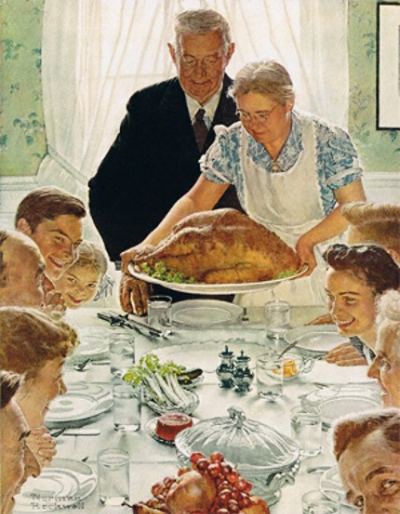
Solomon:
It is true that (Rockwell's) work does not acknowledge social hardships or injustice. It does not offer a sustained meditation on heartbreak or death. Yet why should it? Idealization has been a reputable tradition in art at least since the days when the Greeks put up the Parthenon, and Rockwell's work is no more unrealistic than that of countless art-history legends, like Mondrian, whose geometric compositions exemplify an ideal of harmony and calm, or Watteau, who invented the genre of the fête galante.She's confusing a search for a root ideal with propaganda. To celebrate a fundamental grace, be it in mathematics or the flounce of a lady's skirt, is not the same as a cover-up. The first shines, the second rots under its false premises. What Candide concluded about the promises of Pangloss is true of Rockwell's American Dream: " It is a mania for saying things are well when one is in hell." It is an inability to recognize that being born into a favored group is not the same as creating favored circumstances.
Rockwell opens tomorrow at the Smithsonian's American Art Museum.
About
Blogroll
AJ Blogs
AJBlogCentral | rssculture
Terry Teachout on the arts in New York City
Andrew Taylor on the business of arts & culture
rock culture approximately
Laura Collins-Hughes on arts, culture and coverage
Richard Kessler on arts education
Douglas McLennan's blog
Dalouge Smith advocates for the Arts
Art from the American Outback
Chloe Veltman on how culture will save the world
For immediate release: the arts are marketable
No genre is the new genre
David Jays on theatre and dance
Paul Levy measures the Angles
Judith H. Dobrzynski on Culture
John Rockwell on the arts
innovations and impediments in not-for-profit arts
Jan Herman - arts, media & culture with 'tude
dance
Apollinaire Scherr talks about dance
Tobi Tobias on dance et al...
jazz
Howard Mandel's freelance Urban Improvisation
Focus on New Orleans. Jazz and Other Sounds
Doug Ramsey on Jazz and other matters...
media
Jeff Weinstein's Cultural Mixology
Martha Bayles on Film...
classical music
Fresh ideas on building arts communities
Greg Sandow performs a book-in-progress
Harvey Sachs on music, and various digressions
Bruce Brubaker on all things Piano
Kyle Gann on music after the fact
Greg Sandow on the future of Classical Music
Norman Lebrecht on Shifting Sound Worlds
Joe Horowitz on music
publishing
Jerome Weeks on Books
Scott McLemee on books, ideas & trash-culture ephemera
theatre
Wendy Rosenfield: covering drama, onstage and off
visual
Public Art, Public Space
Regina Hackett takes her Art To Go
John Perreault's art diary
Lee Rosenbaum's Cultural Commentary
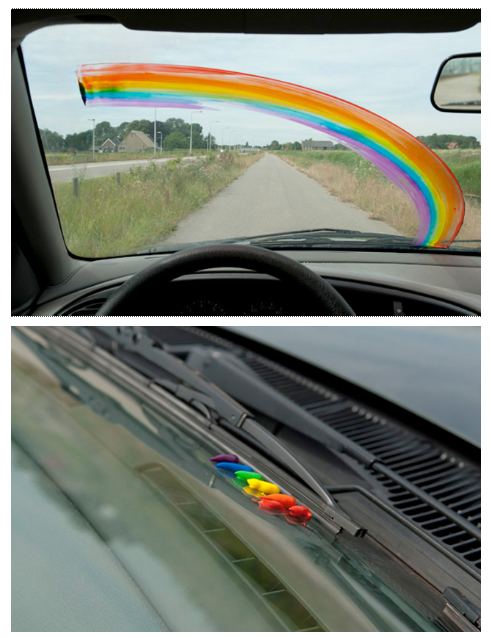

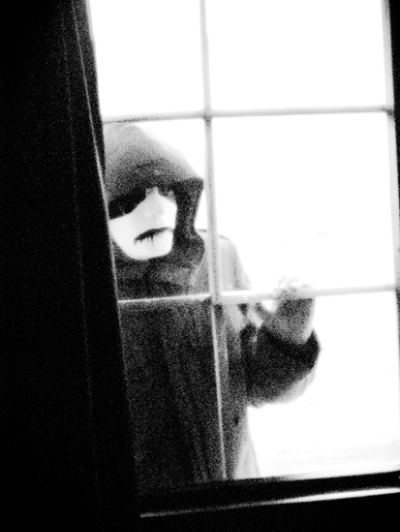

Recent Comments